MOMENTS BEFORE THE DARK - for Thursday is Butterfly Day and Insect Day Giveaway- Week 53
I like all aspects of summer here in my area, including the hot, sometimes inebriating and suffocating days ... but ... some of the best moments arrive at the end of the day, in the short period of time when sun has sunken behind the horizon and the night is still hesitating to envelop the landscape in the dark. In those refreshing moments, when many interesting insect (and other small arthropod) species are getting very active, and they are still visible enough, I'm able to get some shots with unusual atmosphere and a glimpse of the varied night-life in the tall, dried out grass that grows along the coastline.

And I'll start this crepuscular journey with the most iconic little light in the insect world. The firefly. On this photograph you can see the female of the most common European species Lampyris noctiluca, shining between the pebbles, in the area where the meadow meets the tidal zone. It's a long exposure shot that has enabled me to capture the scarce natural light and the mysterious beauty of twilight.
The female of this beetle species has no wings, and looks more like some sort of larvae. When searching for a common name in English I found the word glowworm, and that's exactly how she looks at first sight. They emit yellowish-green light from the translucent underside of their last three abdominal segments to attract the smaller flying males. They will glow for two hours and then retreat back into their hiding place until the next night, or stop glowing as soon as they find a mate. Males are also using the glow in the same part of the body to communicate. In the following video ...
... among few other things ... from the 02 : 05 exactly ... you can see a mating frenzy with the female and some males, I filmed this later in the night, with the greenish night vision of a cheap compact camera, so the quality is very low ... but even this muddled look at this interesting night situation, has some charm ... in my opinion. This small camera, that is now completely broken, had a small green light near the shutter ... and some males were very attracted by that glow. The following photograph ...
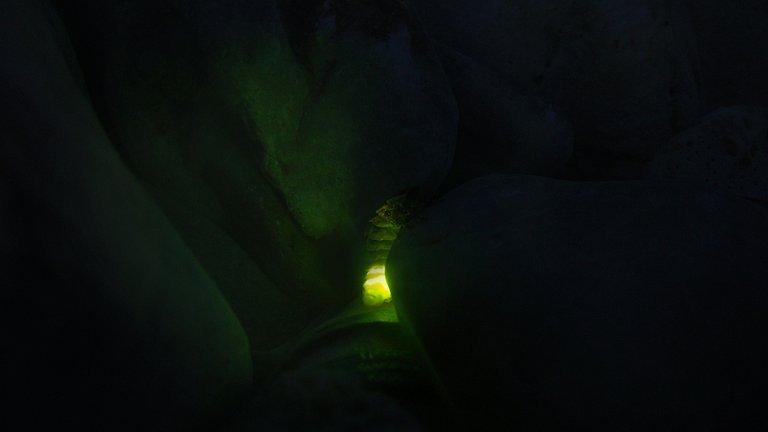 (Enlargeable)
(Enlargeable)... is an enlargeable continuation of the post's opening picture ... the same female, a bit later ... shining through the more dense darkness.
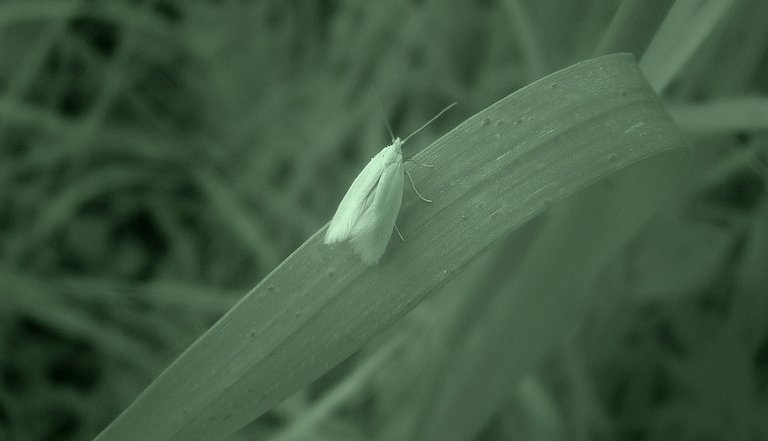 (Enlargeable)
(Enlargeable)Here is a greenish, night vision look at the tiny grass moth. Many small moth species can be seen during the whole day, especially if you disturb their diurnal rest while walking through the tall grass. But these, I see only in the late evening ... on the next picture ...
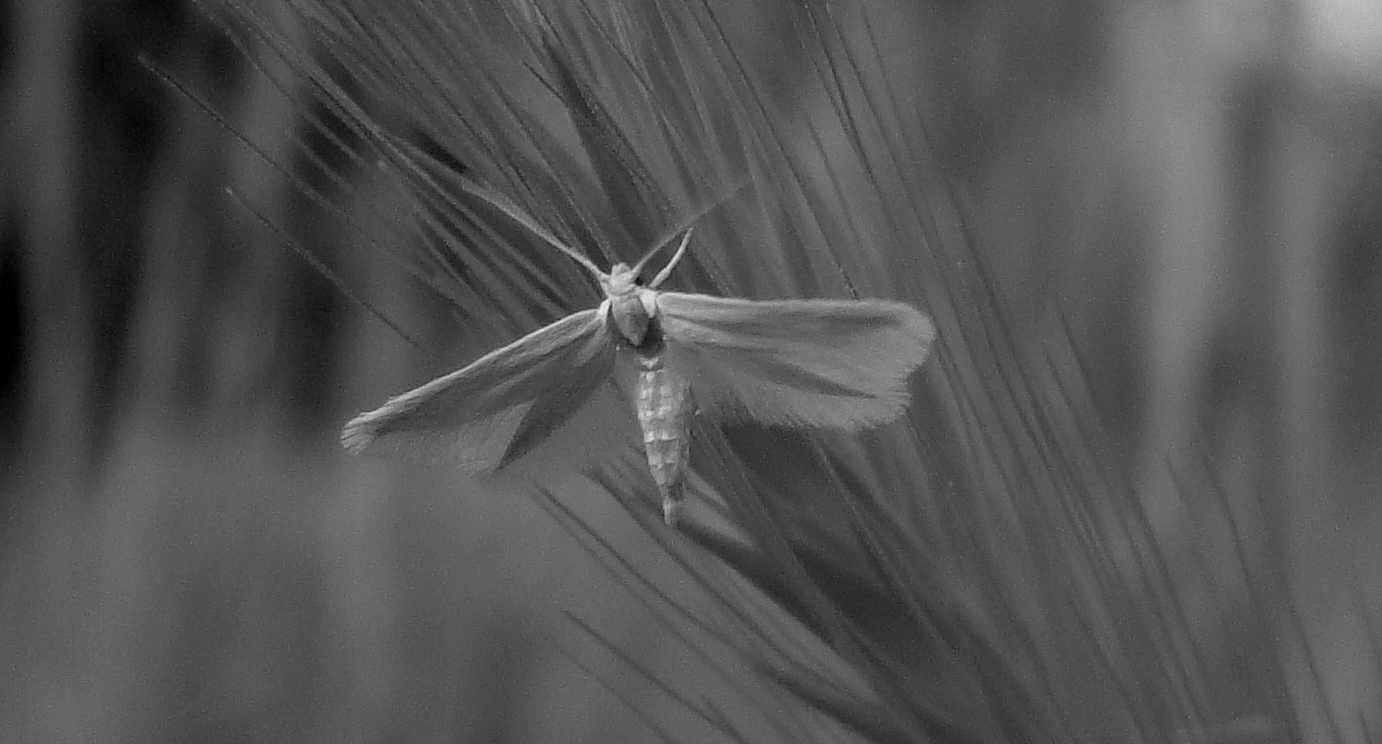
... that I changed from green to black & white for aesthetic reasons ... you can see the female spreading the wings, in a pheromone releasing pose ... as for the fireflies, it's mating time for this species too. Before continuing with other small arthropods activities ... I'll put now a few photographs of the setting and the scenery ...
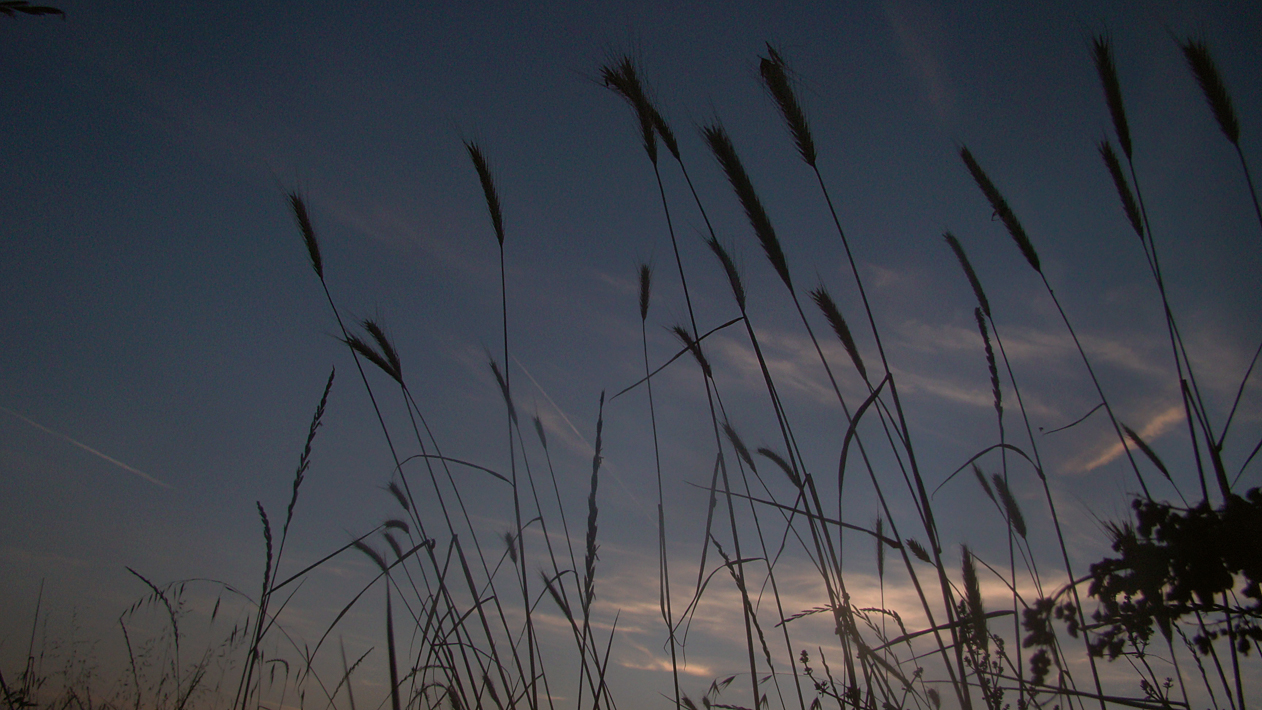
... to add a bit of diversity ...
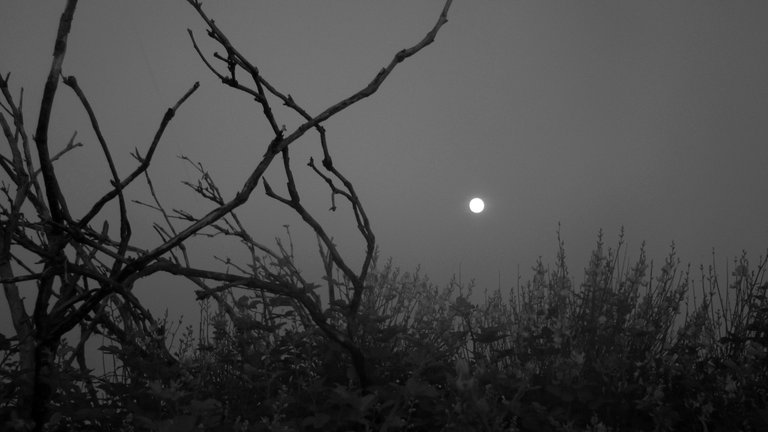 (Enlargeable)
(Enlargeable)... and make the post more atmospheric ...
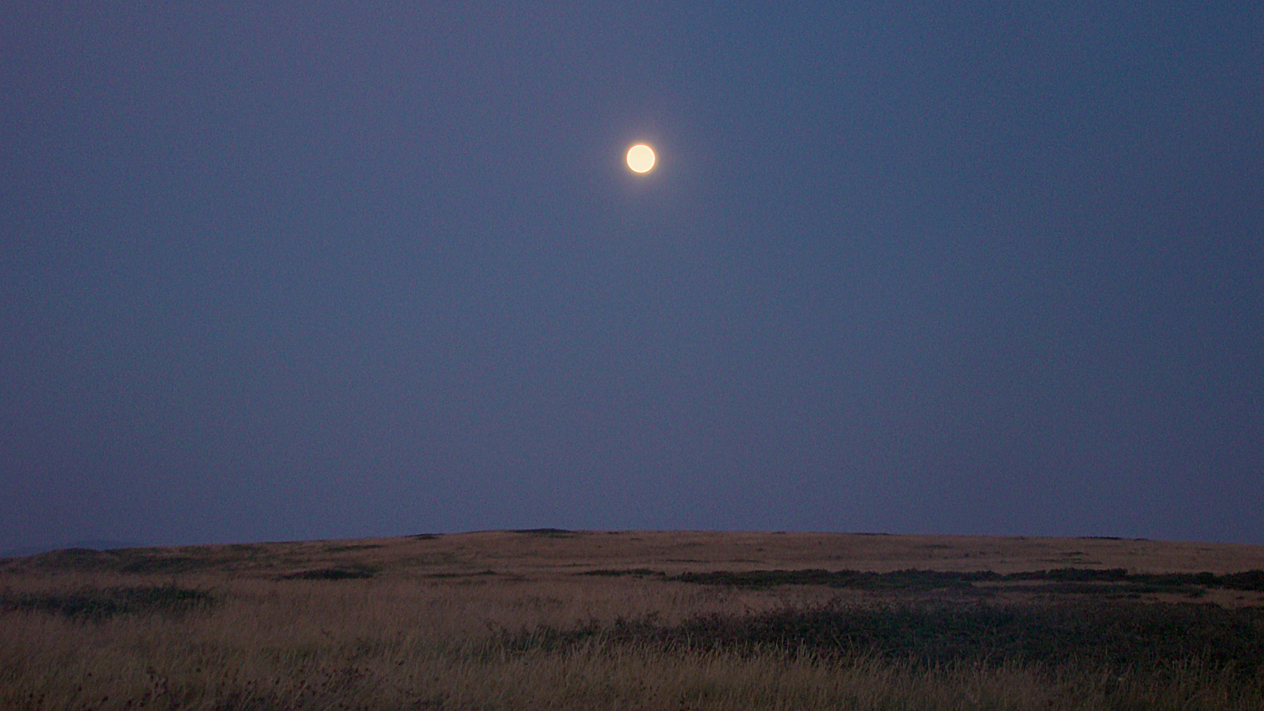
... and immersive.
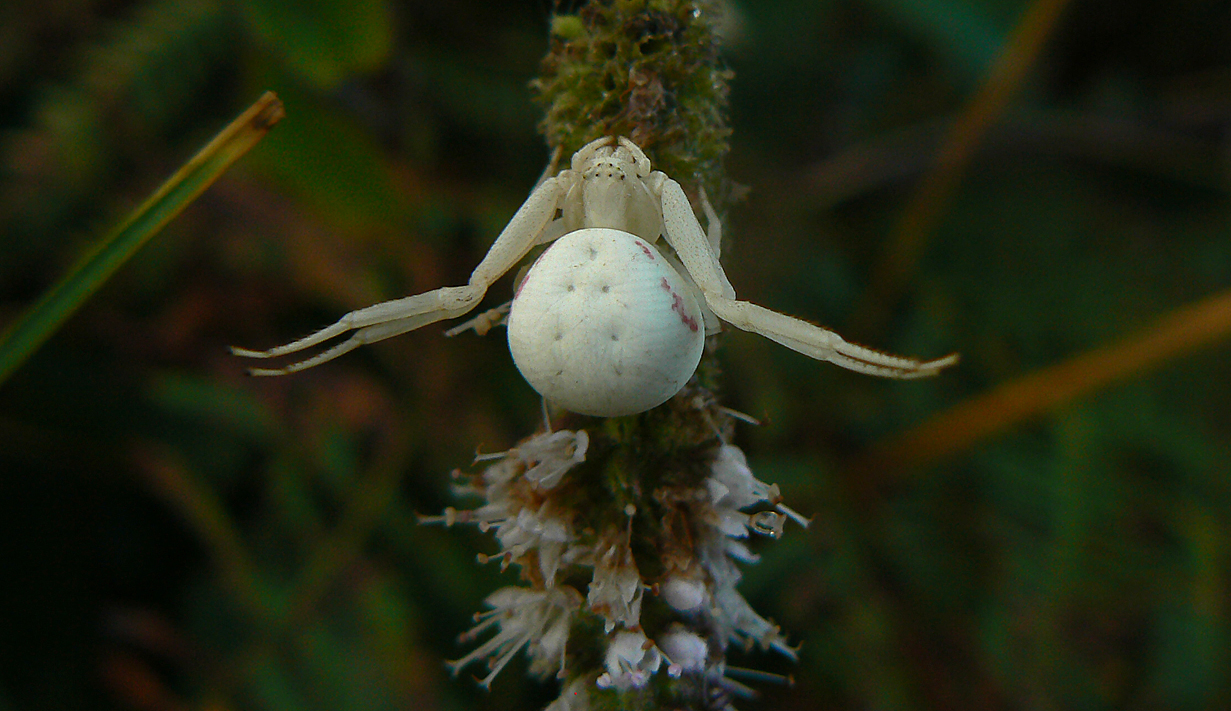
With many insect activity in the twilight ... many spiders are waiting for their feeding opportunity in this almost - dark. Here you can see one of the crab spider species in the ambushing pose ... the spider in this case looks a bit like some kind of flower with long stamens.
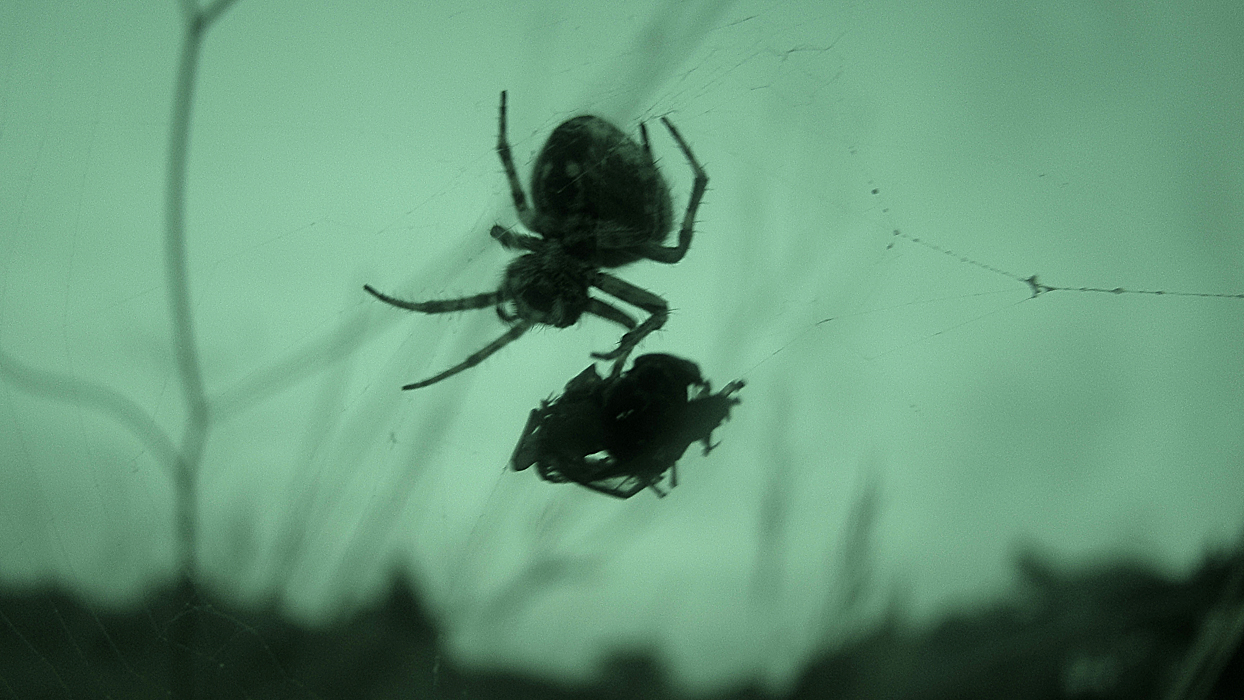
On this photograph, I caught some Pumpkin spider species with its prey.
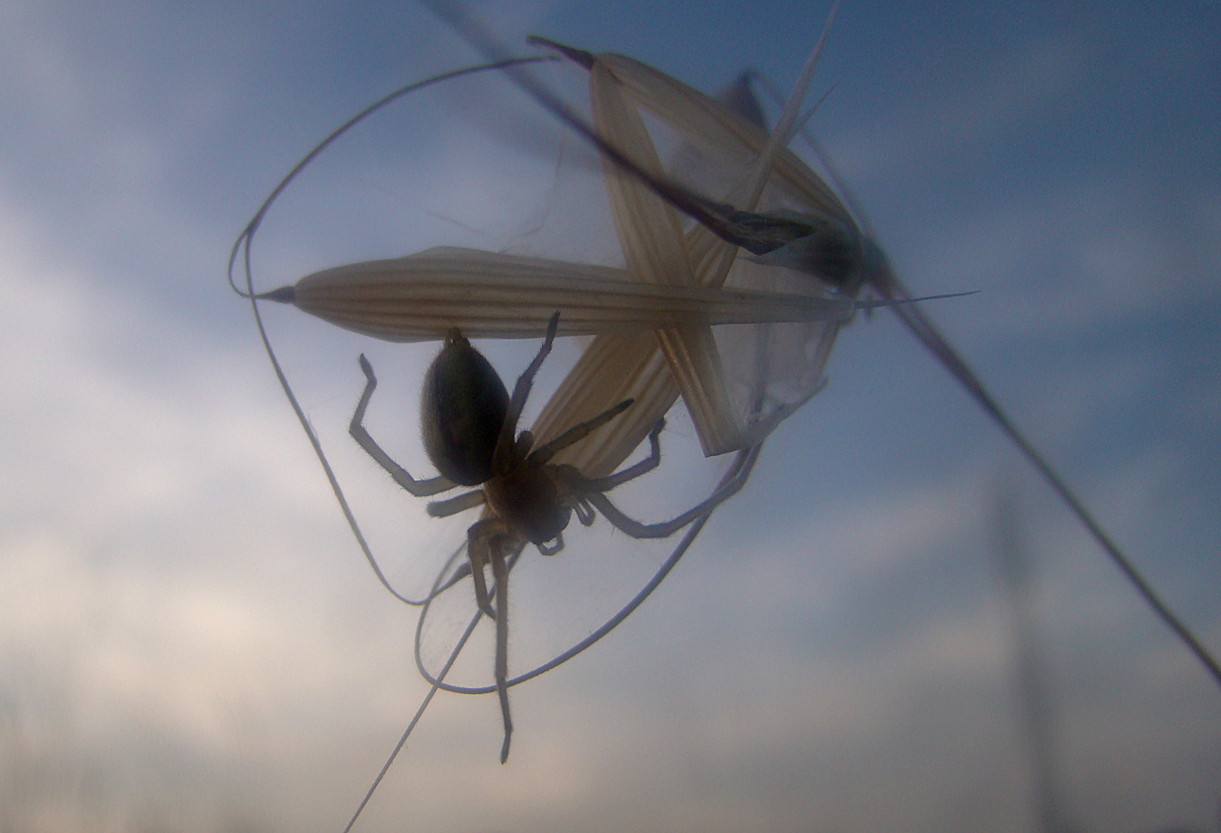
This is a Sack spider species. Members of this Clubionidae family are wandering predators that don't use webs to catch their prey, but they use silk to build small shelters using various leaves and similar plant parts. They are often hidden in their sacks during the day.
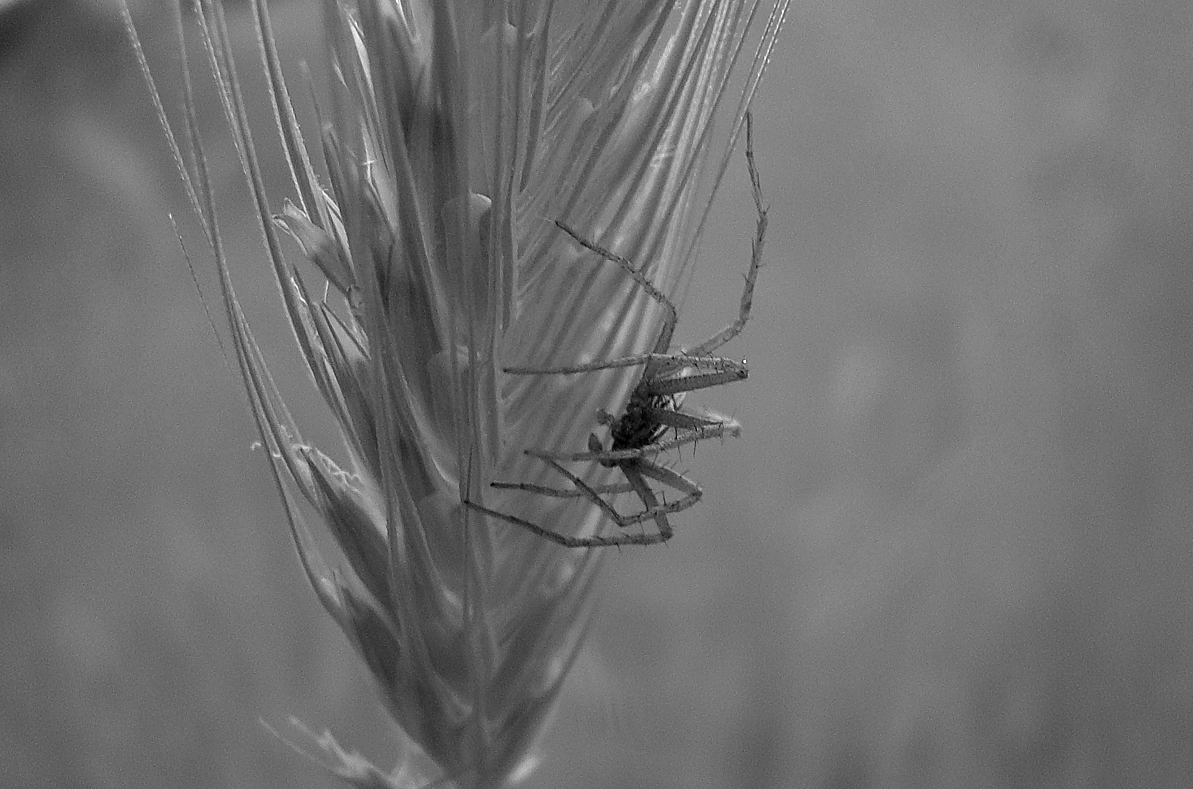
This is the Pisaura mirabilis spider in the evening hunting expedition. Only females build silky shelters when the cocoon is in the late phase of development and when the small spiders are born, they will continue to use the shelter while growing under the mother's protection.

Here is another small web building species that has caught a pretty big black ant. I don't have any information about this spider.
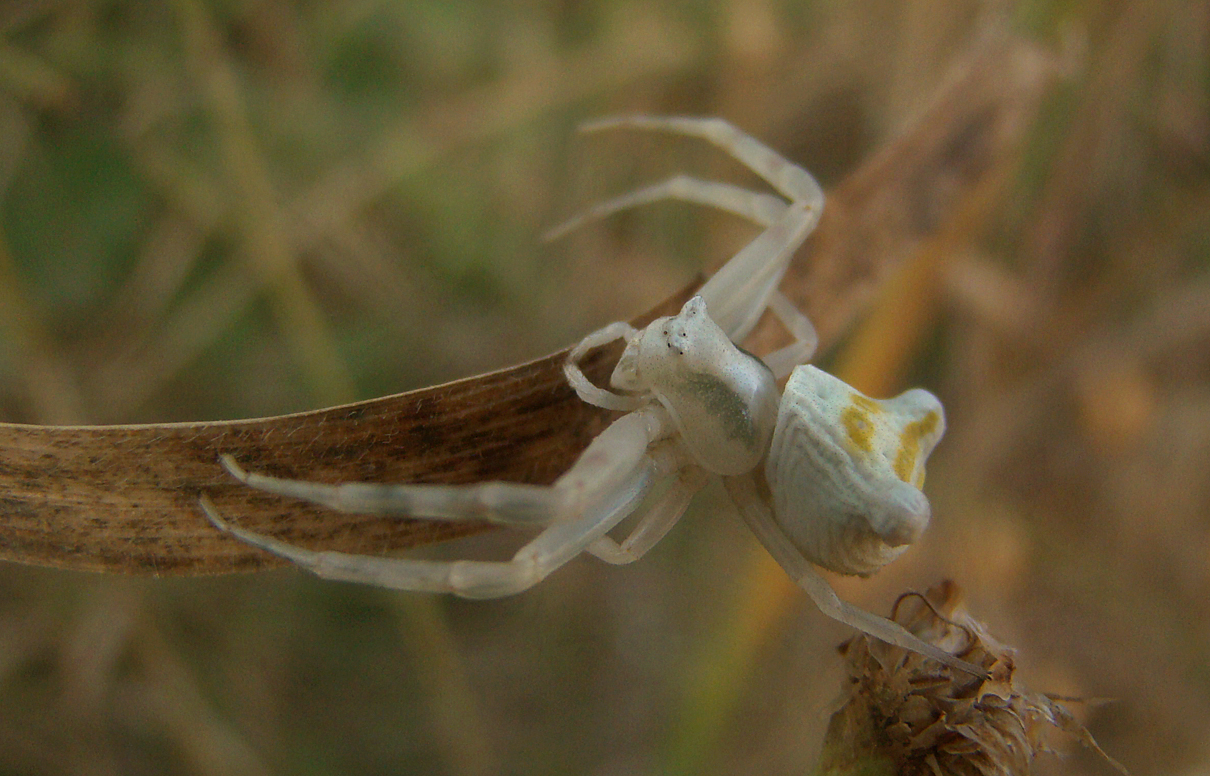
On this photograph, is another crab spider species looking for a good place to set its ambush.
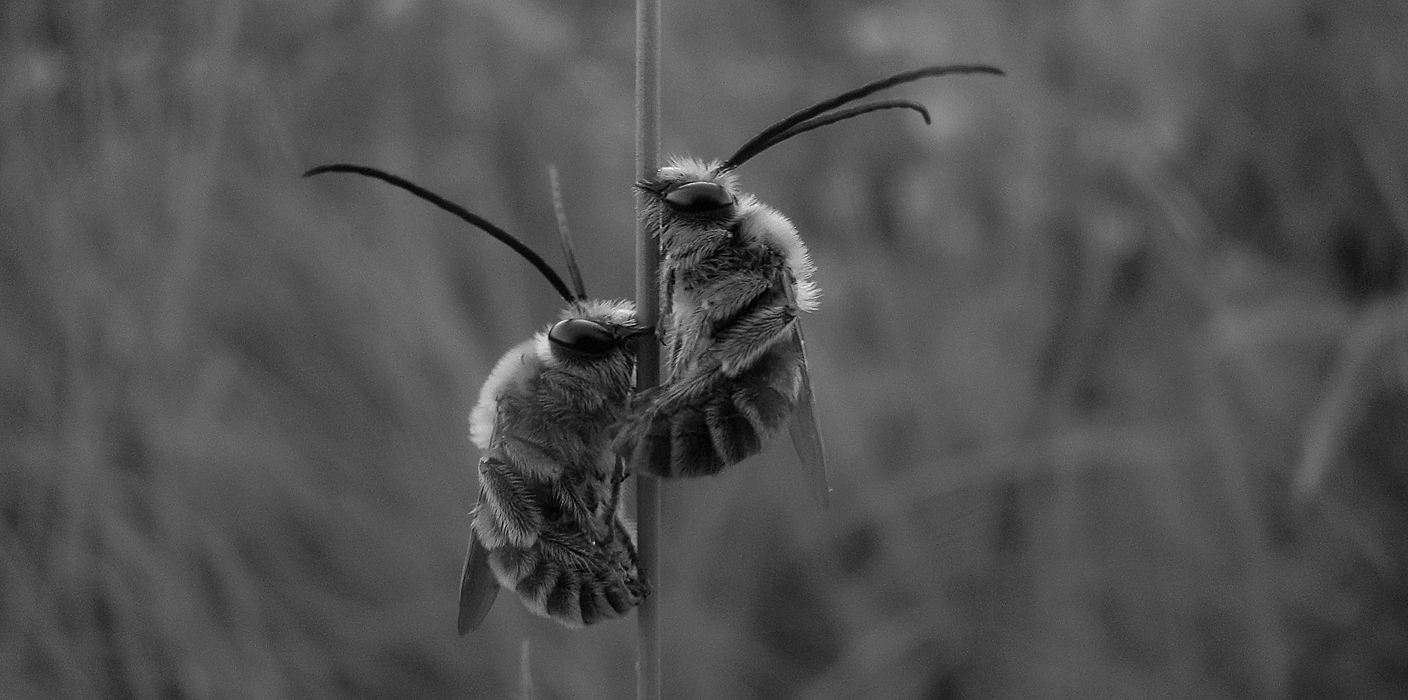
While all this is going on, many diurnal species, like these Long - horned bees (Eucera longicornis) are sleeping, attached with their mandibles to the stems of grass. But before continue with some similar examples of the good night rest ...
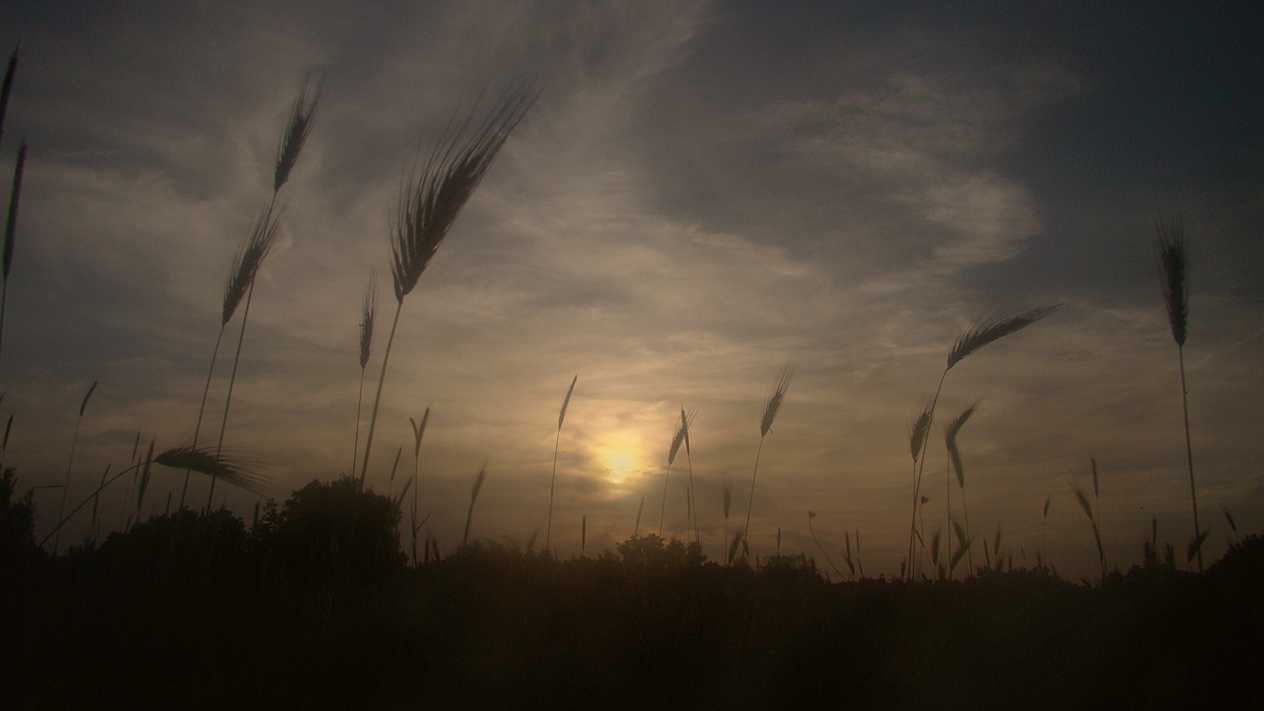
... I'll make a little break ...
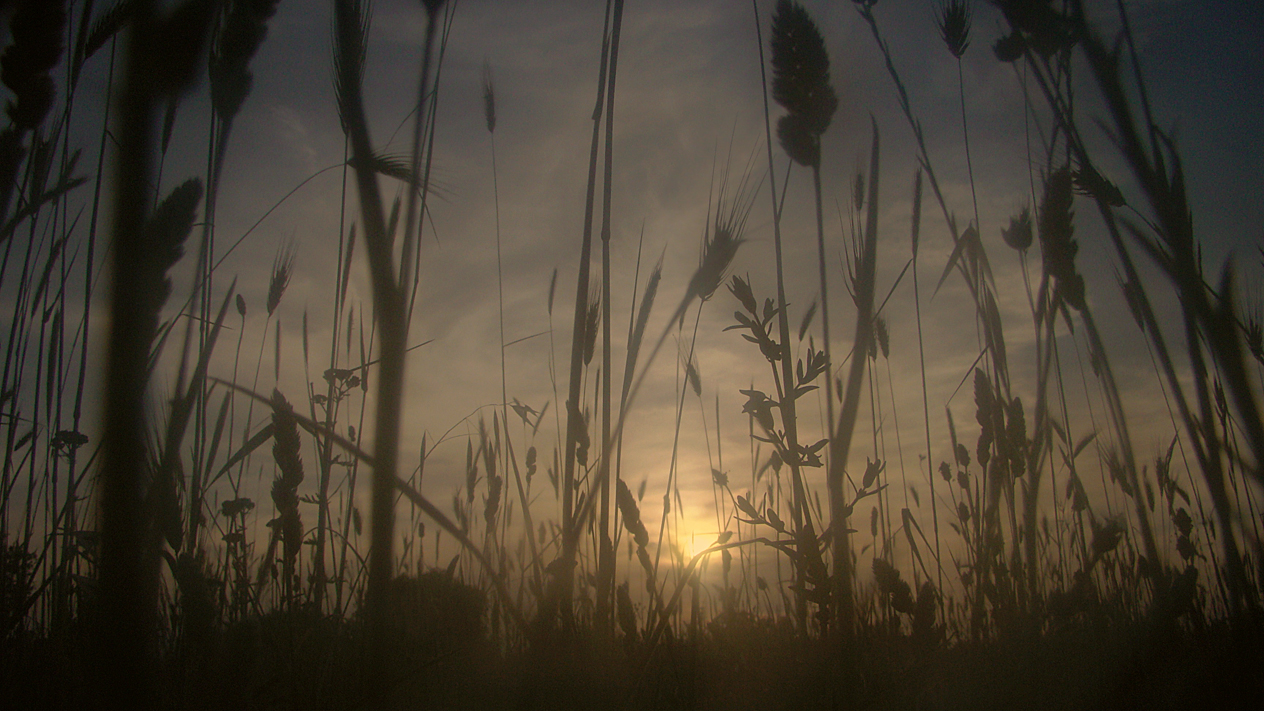
... with another set of photographs ...
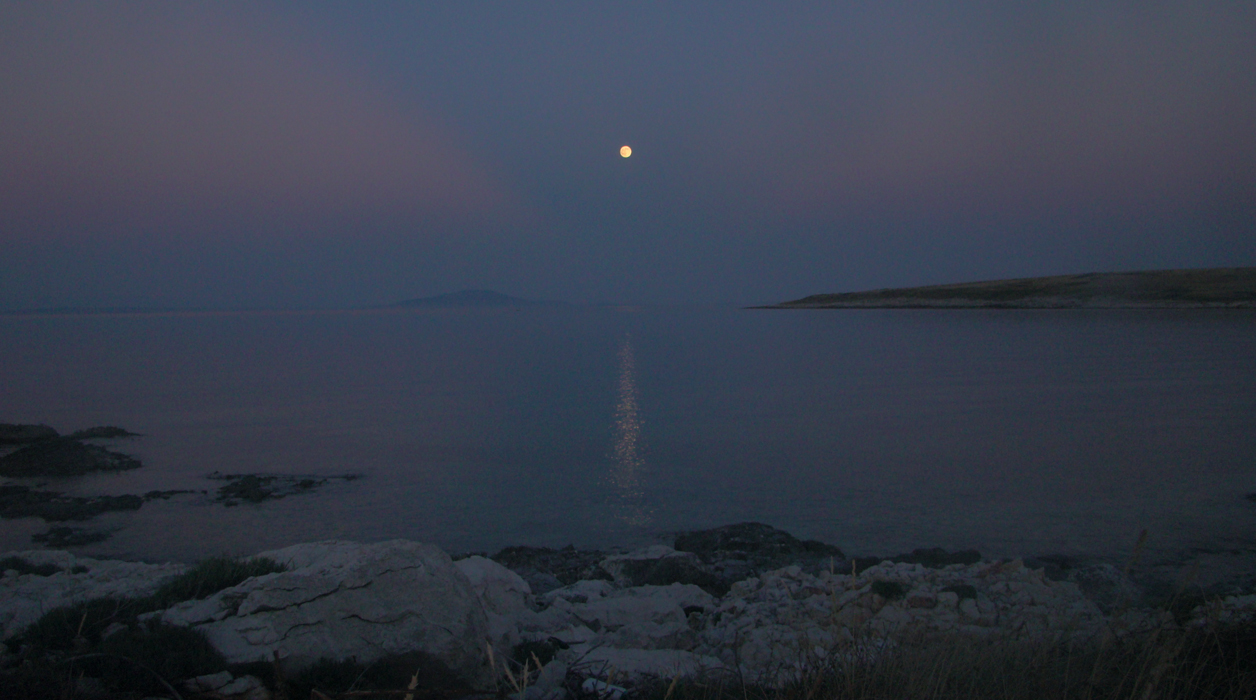
... showing the wider view ...
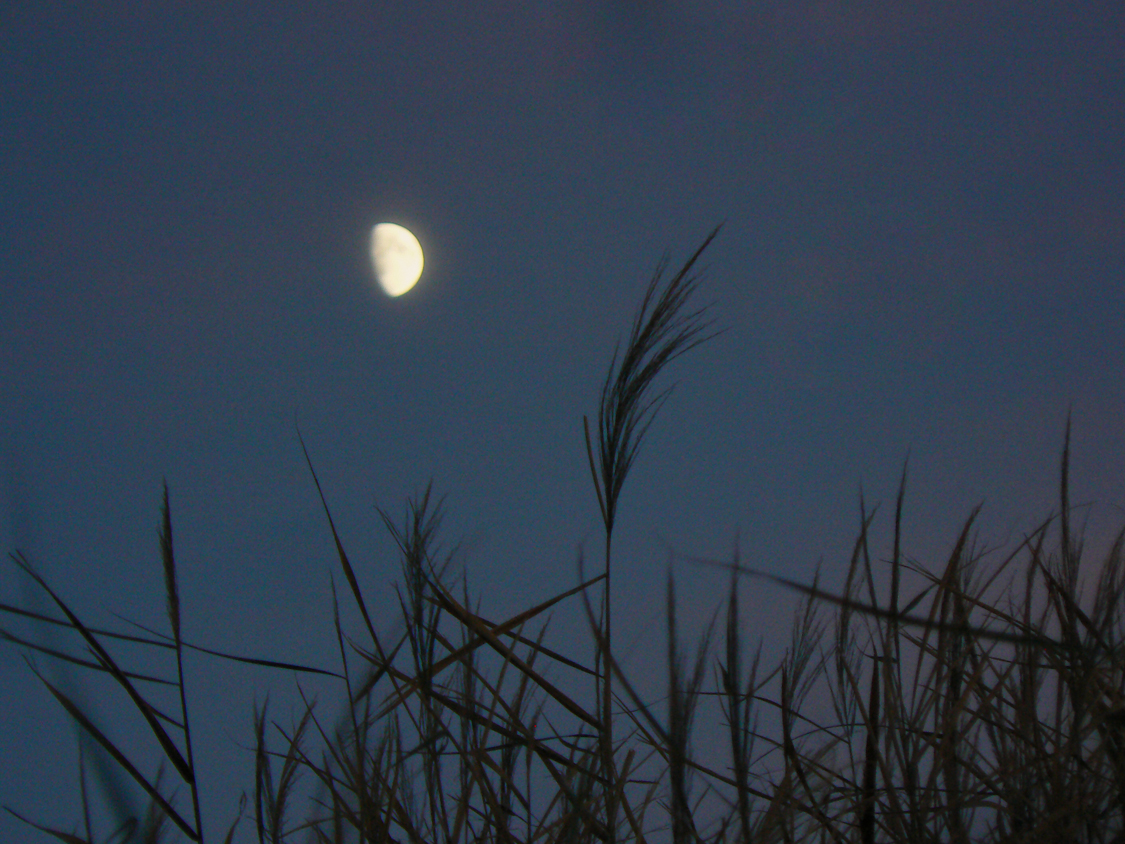
... on this habitat.
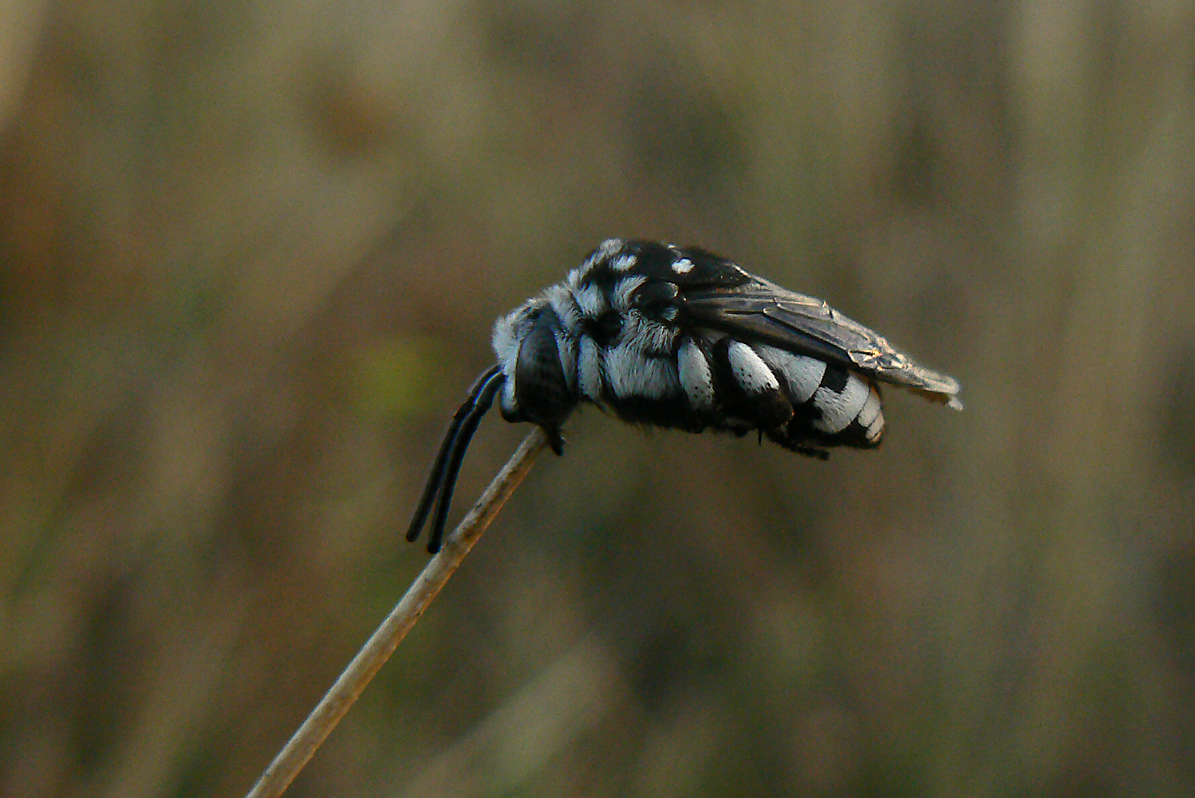
This small bumblebee, I couldn't find the exact species, is also resting attached to a straw ...
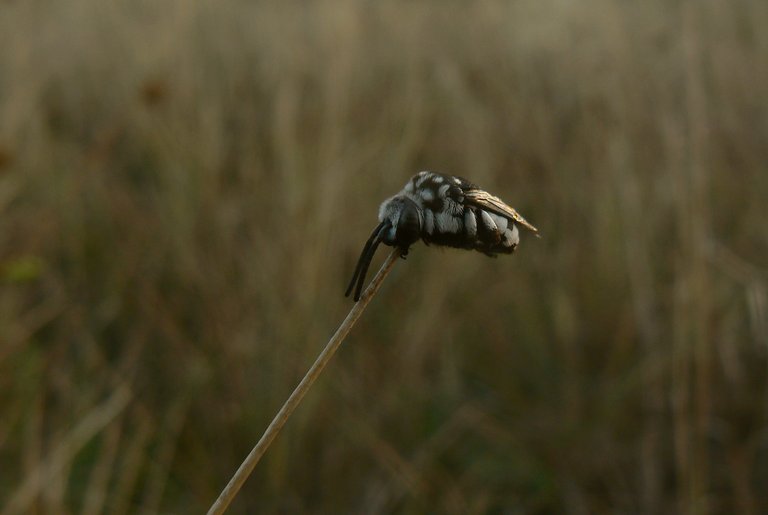 (Enlargeable)
(Enlargeable)... and looks pretty cute in this pose.
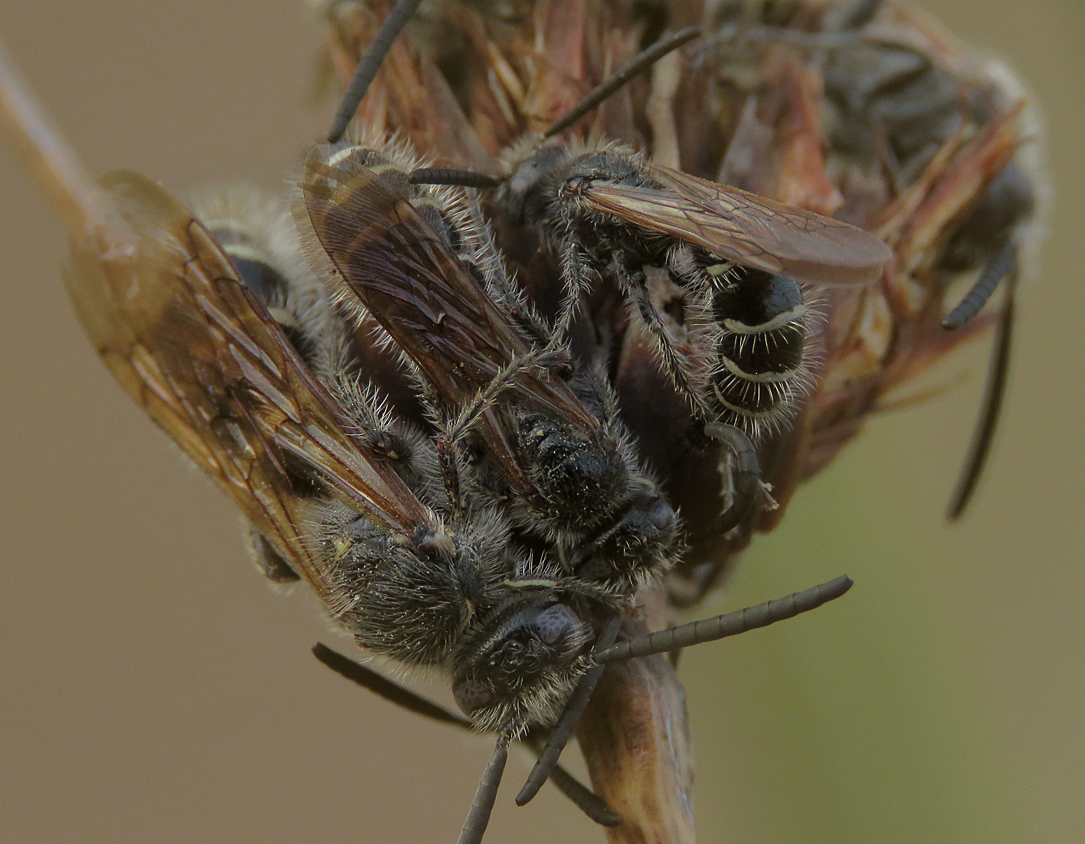
These Furrow bees ... I mean, I think that they are bees of this type ... but I'm not very sure ... If you know better, I'll be glad that you correct me ...
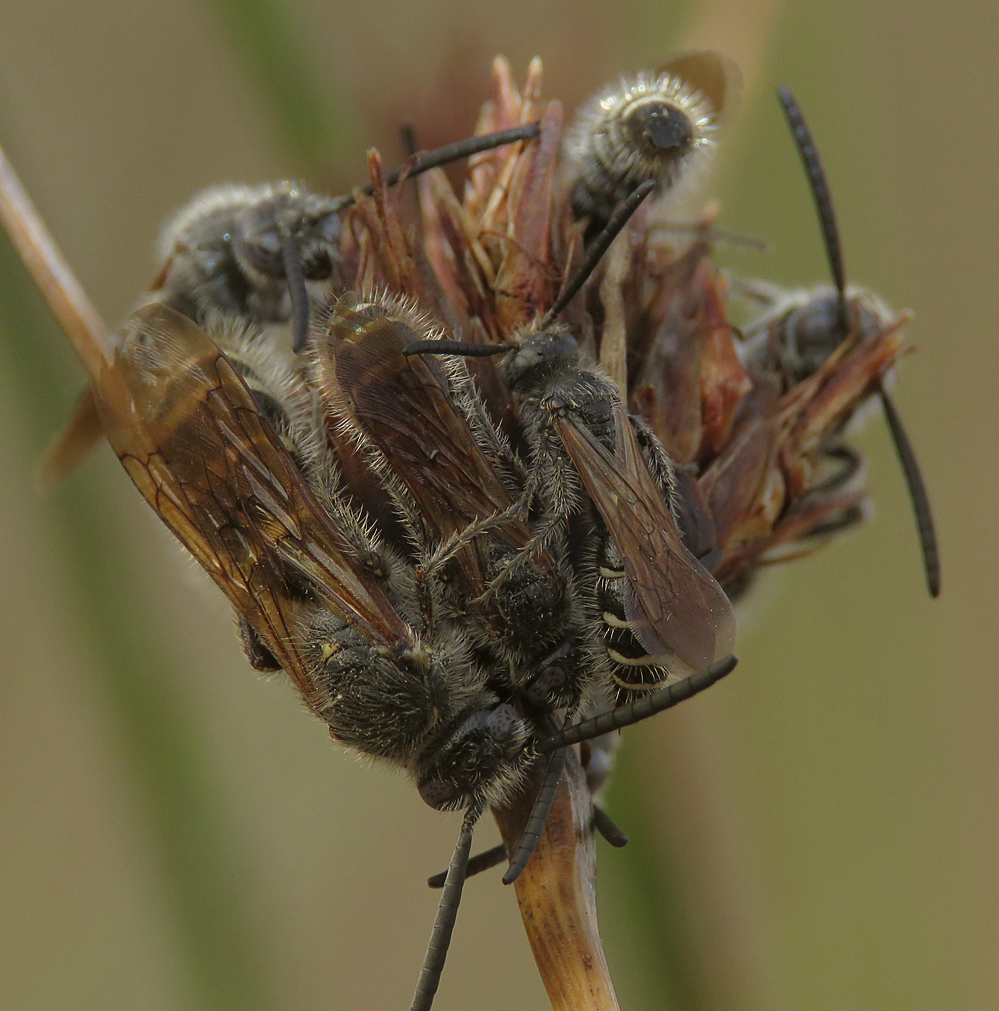
... these small bees are sleeping together, in small clusters, on the ears of grass and wild carrot flowers.
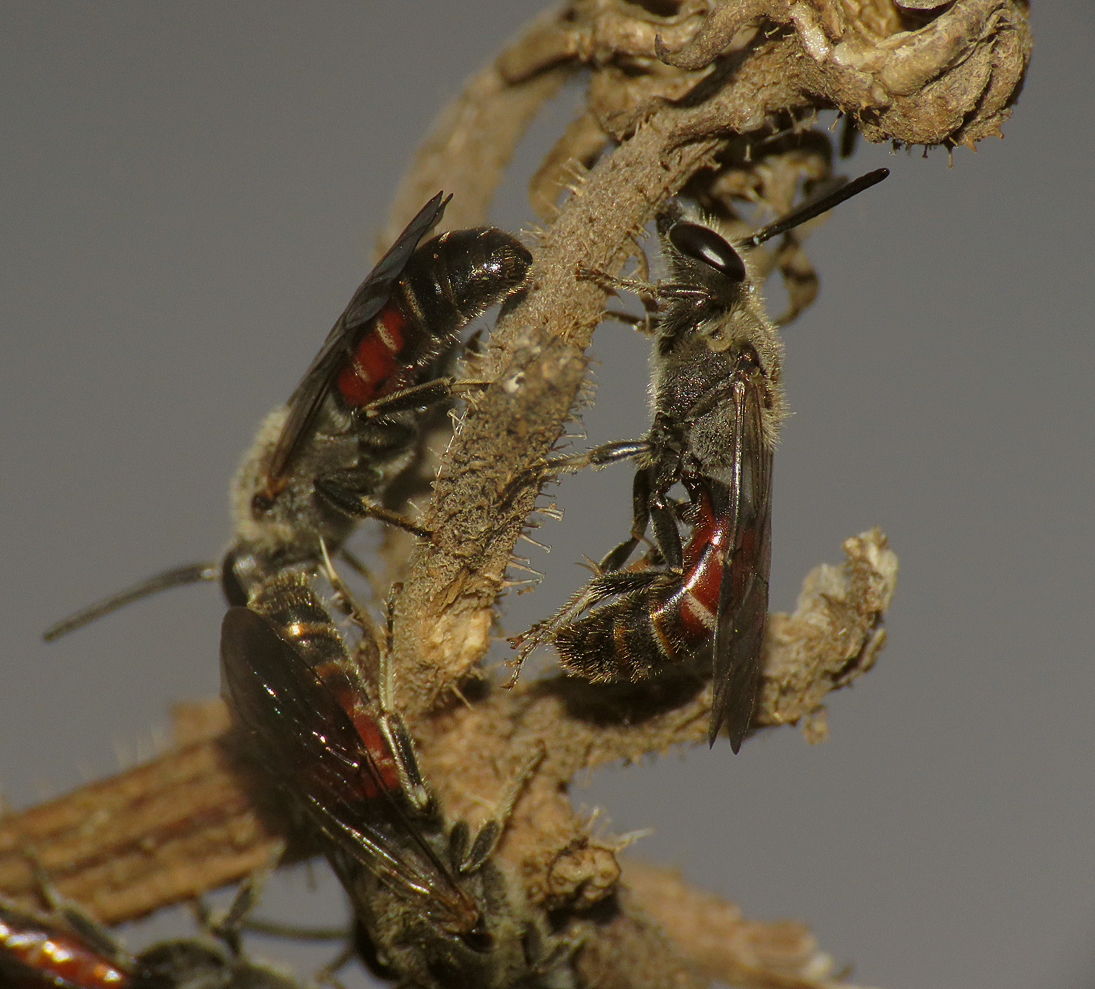
On this photograph you can see another bee species that is forming the "sleeping clusters"on these meadows ... and in the following video ...
... you can watch the bees forming the cluster ... but not only this, if you have time to watch the entire video, you'll see some cool stuff that you didn't saw in the photographic section of this post.
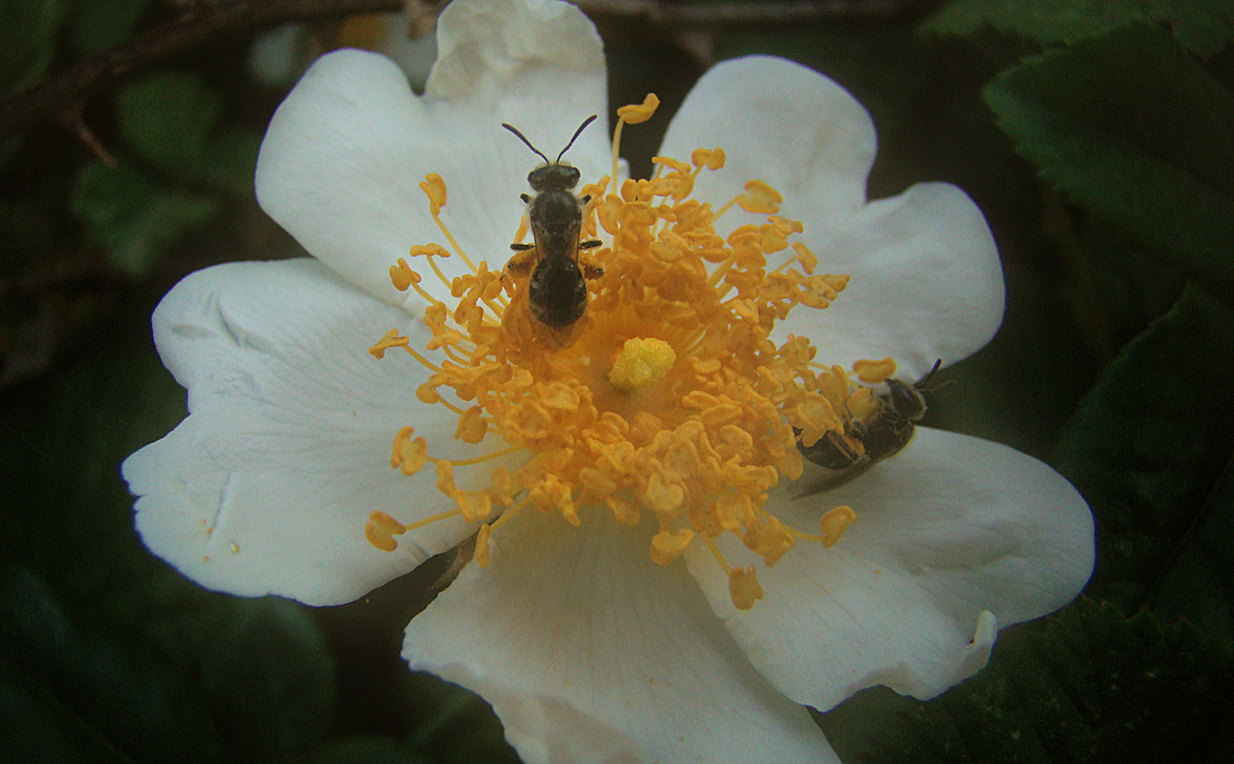
Not all bees are resting ...
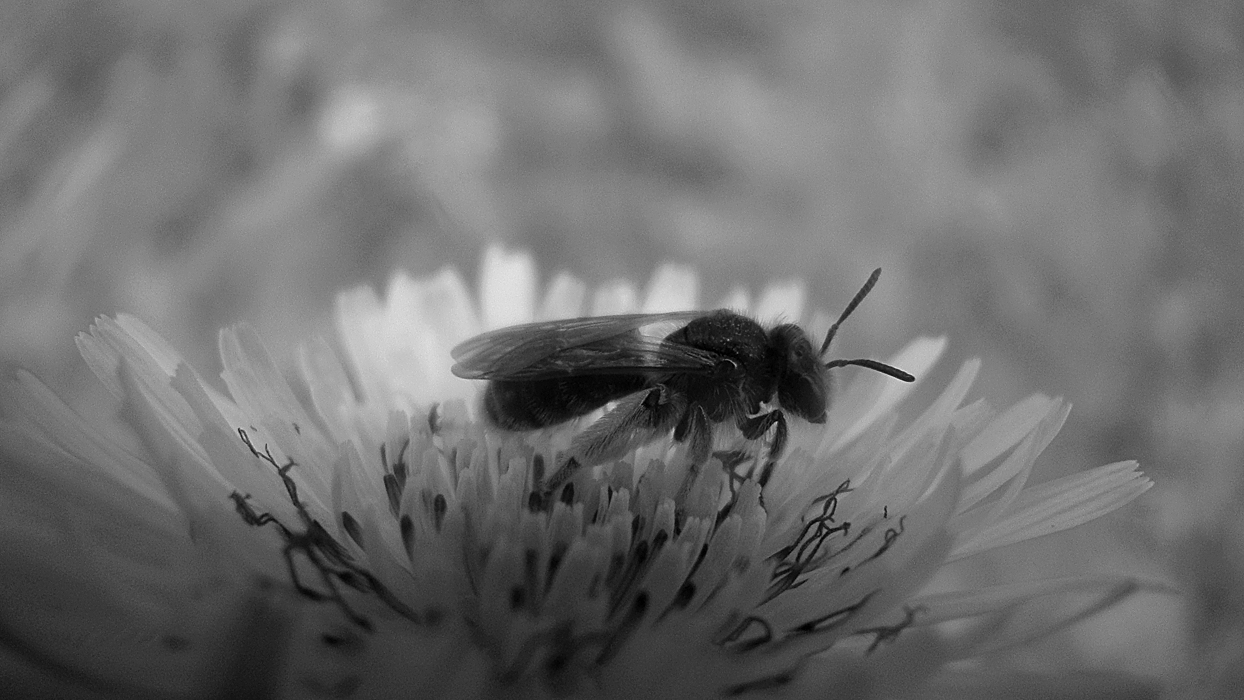
... this tiny species is feeding until the complete dark.
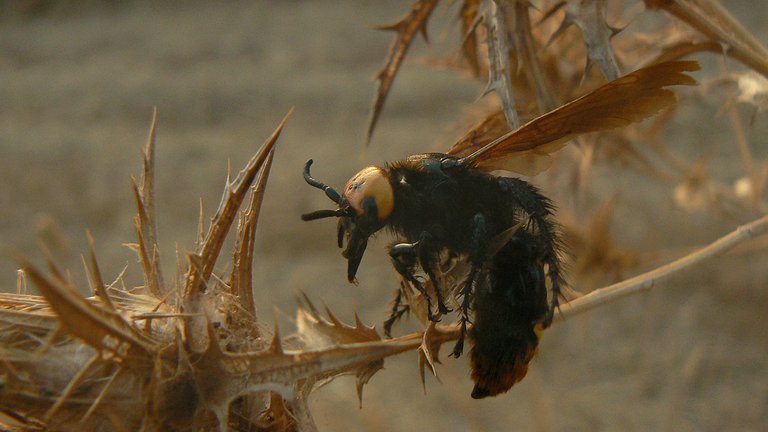
This furry giant with long mandibles is the Mammoth wasp (Megascolia maculata) the largest wasp in Europe. This wasp hunt the European rhinoceros beetle larvae to use as a food to grow their own larvae. The adult mammoth wasps feed on nectar, and if we exclude this reproductive moment that involves some hunting, they are usually (in my experience) gentle giants not aggressive towards the photographer. For the night rest they prefer the security of the thorny thistle plant, as you can see on the above photograph ... but sometimes ...
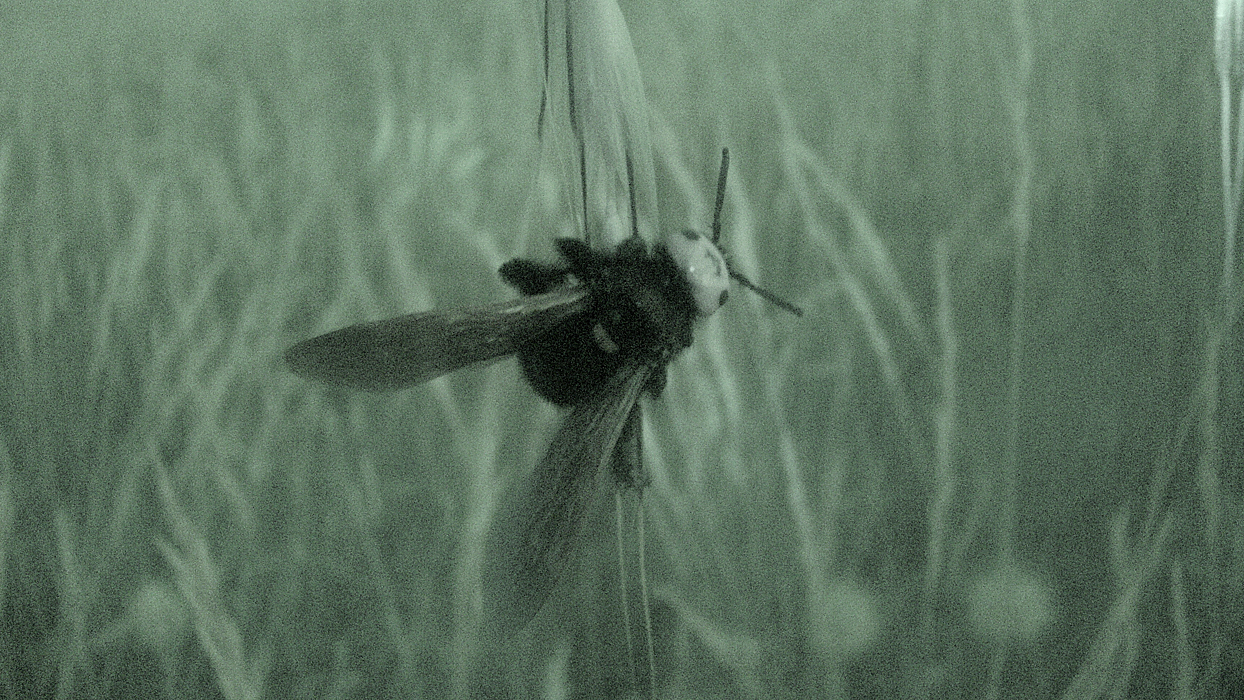
... as you can see on this grainy, greenish night - view shot ... you can find them hanging on the grass, in a pretty vulnerable position. And now ...
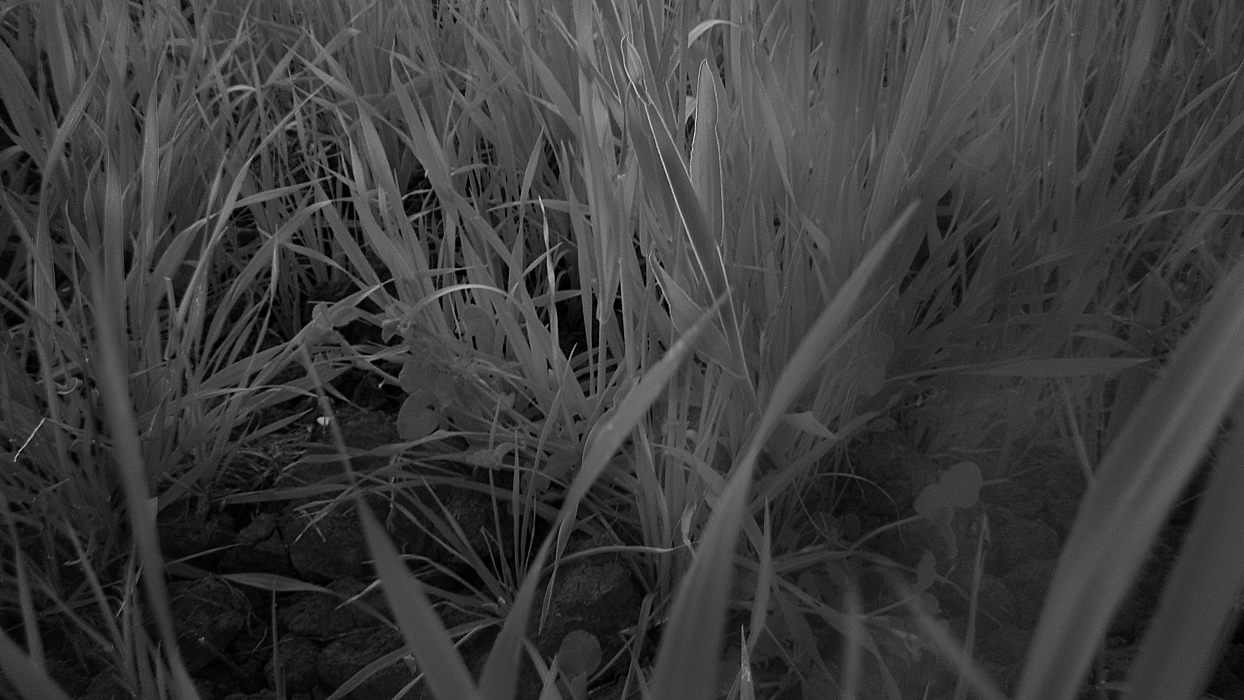
... before continue with the insect life ...
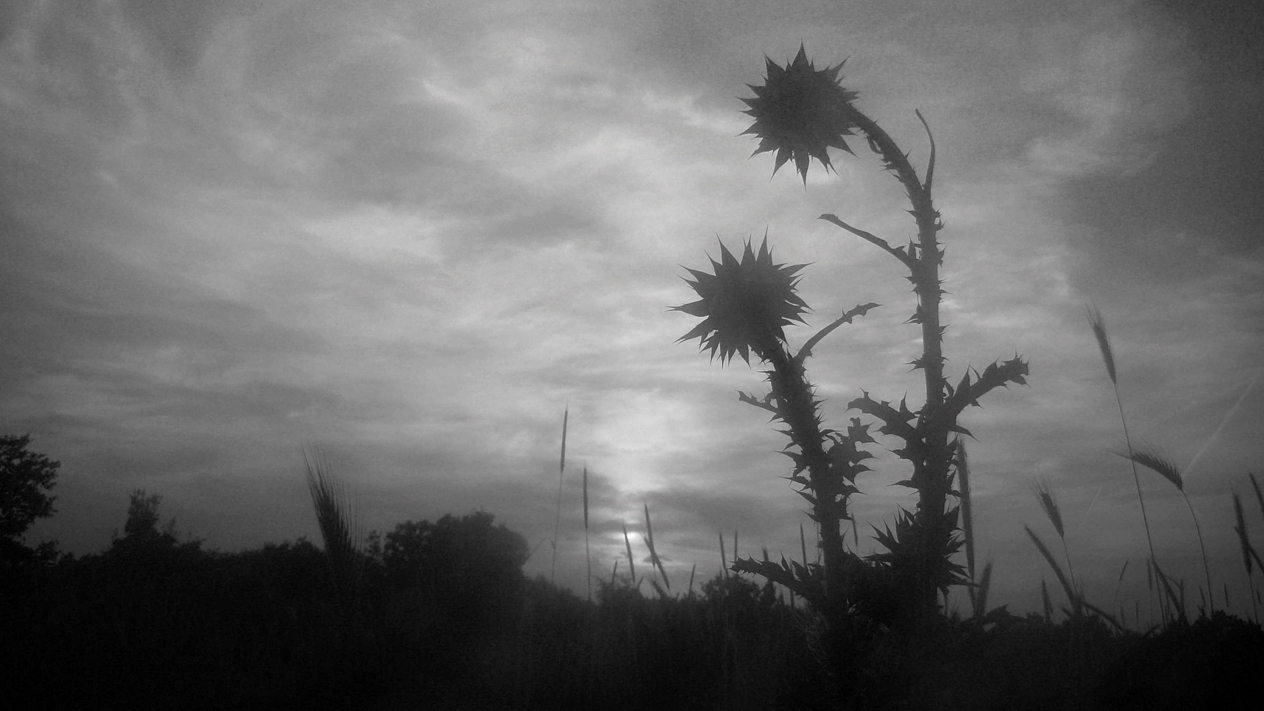
... another break ...
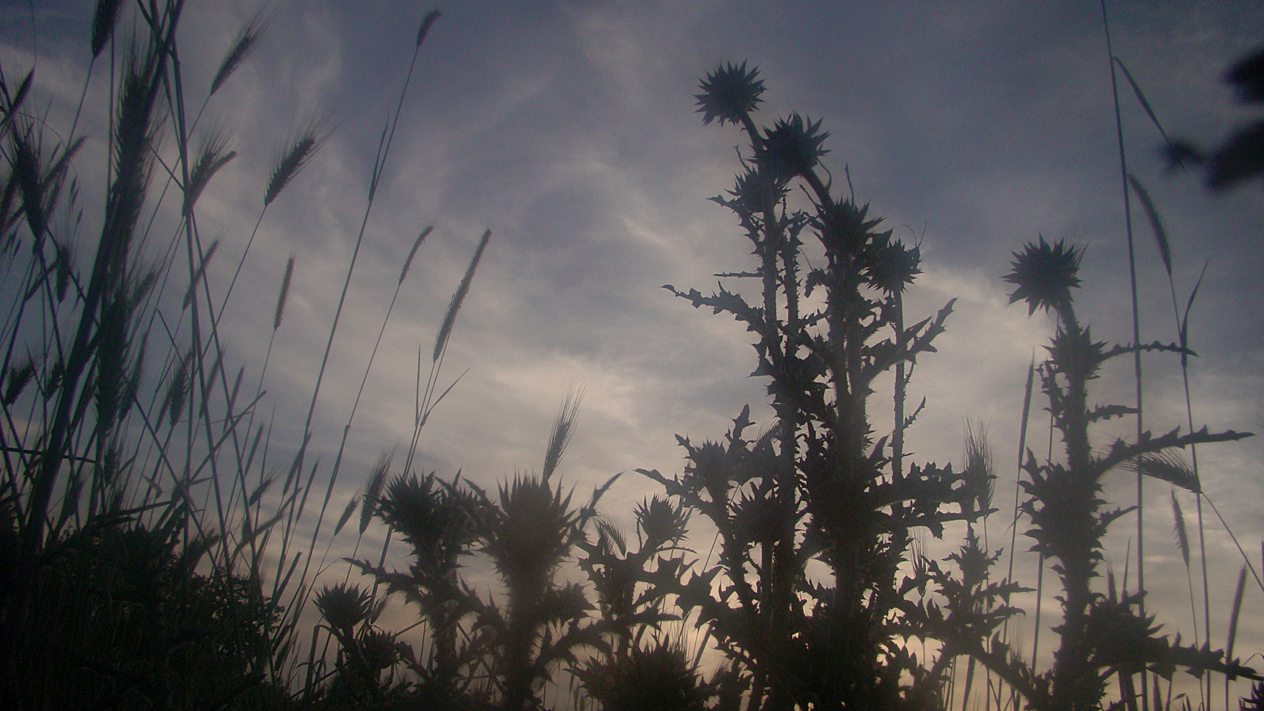
... with some thorny silhouettes ...

... some lovely flowers ...

... of this plant that I see very often on the coastal meadows ... but I couldn't find on Internet, so I can't tell you the name of the species ...
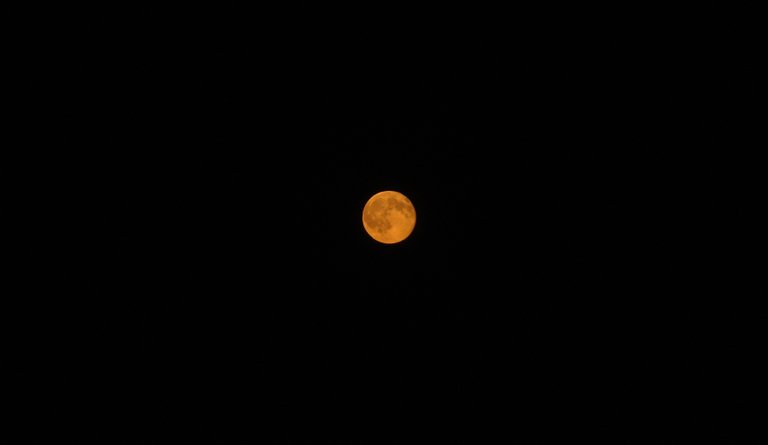 (Enlargeable)
(Enlargeable)... and a short look at the full moon.
 (Enlargeable)
(Enlargeable)Butterflies are also resting on the grass during the dark hours.
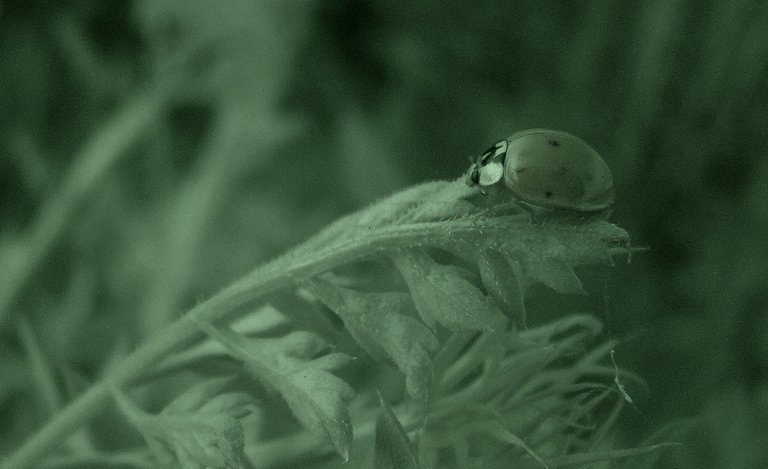
This ladybug is caught on photograph while searching for some nice, sheltered place to spend the night there ...
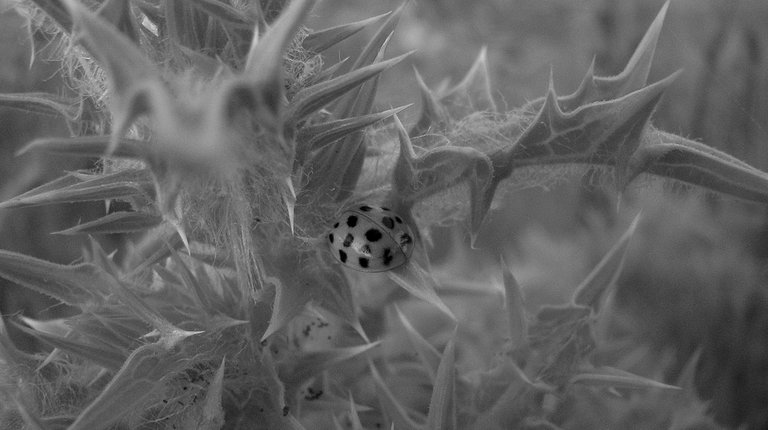
... while this one ... of another Ladybug species ... has already found shelter between the thorns of the Scolymus hispanicus plant.
 (Enlargeable)
(Enlargeable)This resilient, thorny plant is a favorite shelter for many species. I often see something new, something I never saw before, hiding there. Like this minuscule fly ad example, with lovely stripes on the wings, that I saw for the first and only time in the occasion where this shot was taken ... a few years ago.
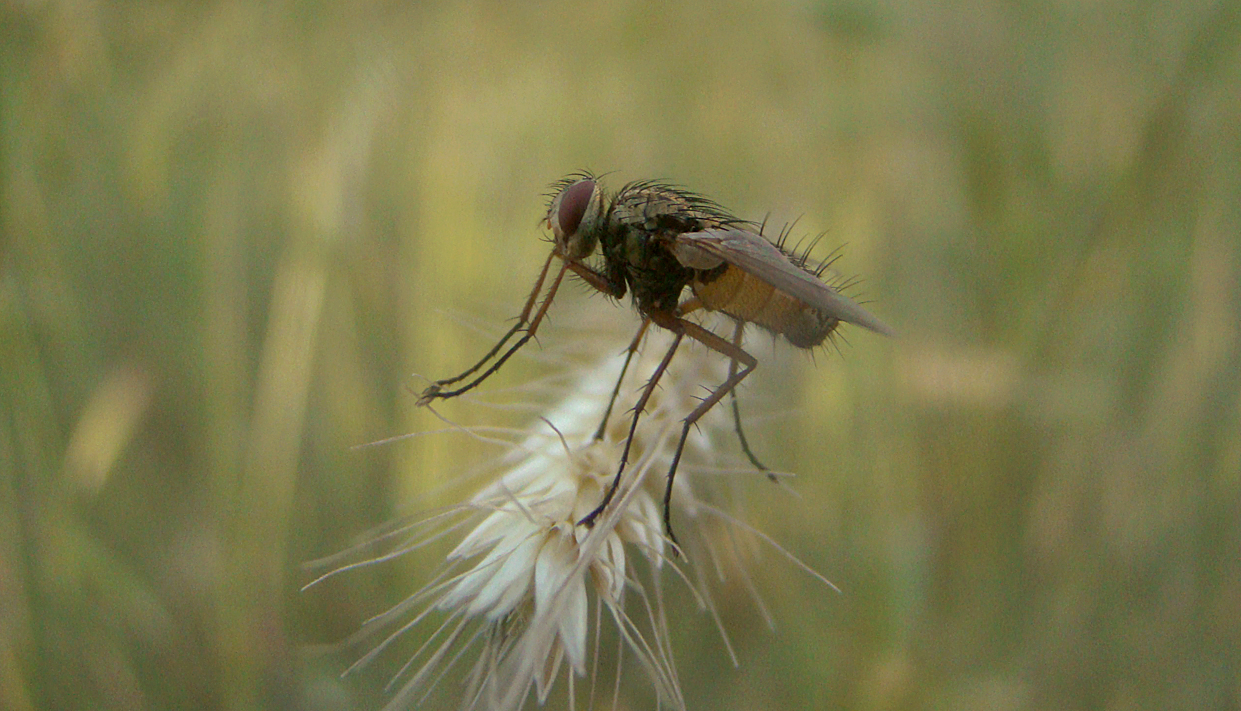
These long - legged flies ...
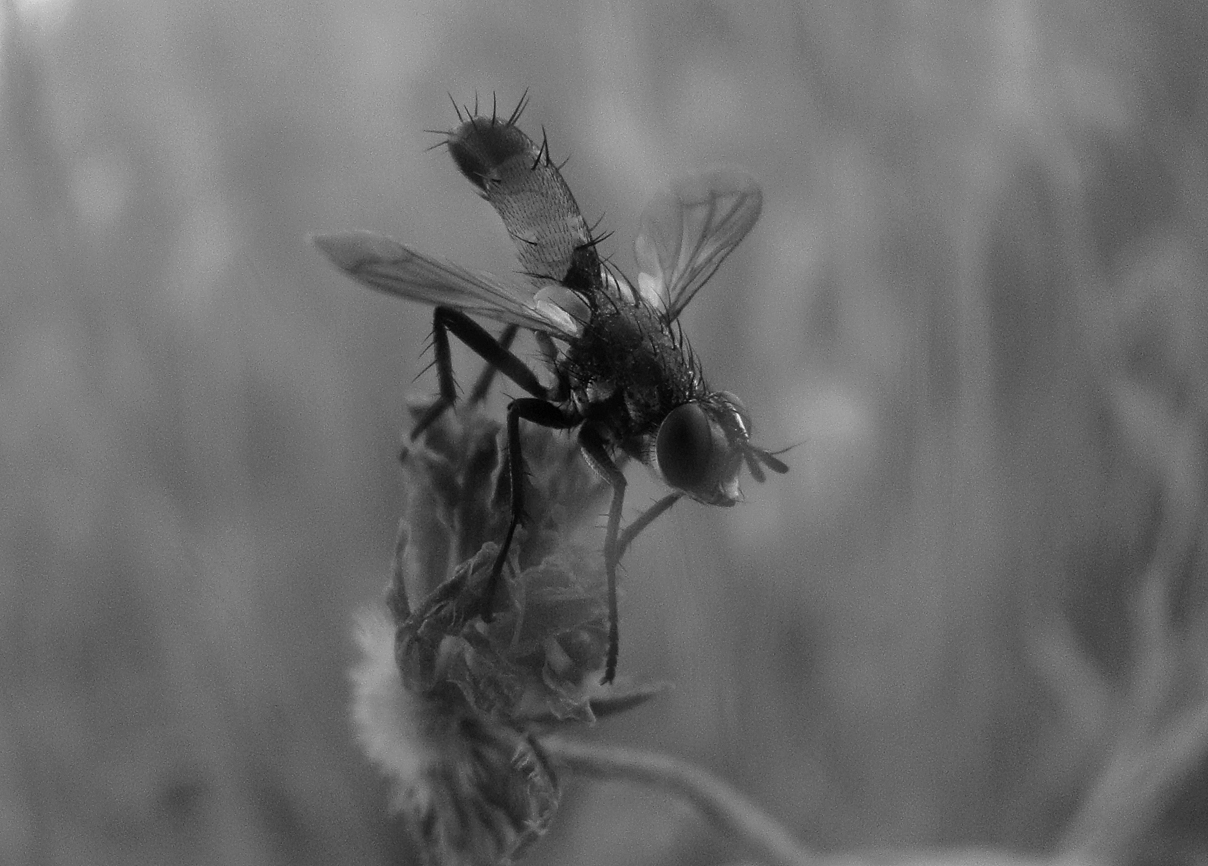
... with translucent abdomen, are regularly quiet on the grass at dusk.
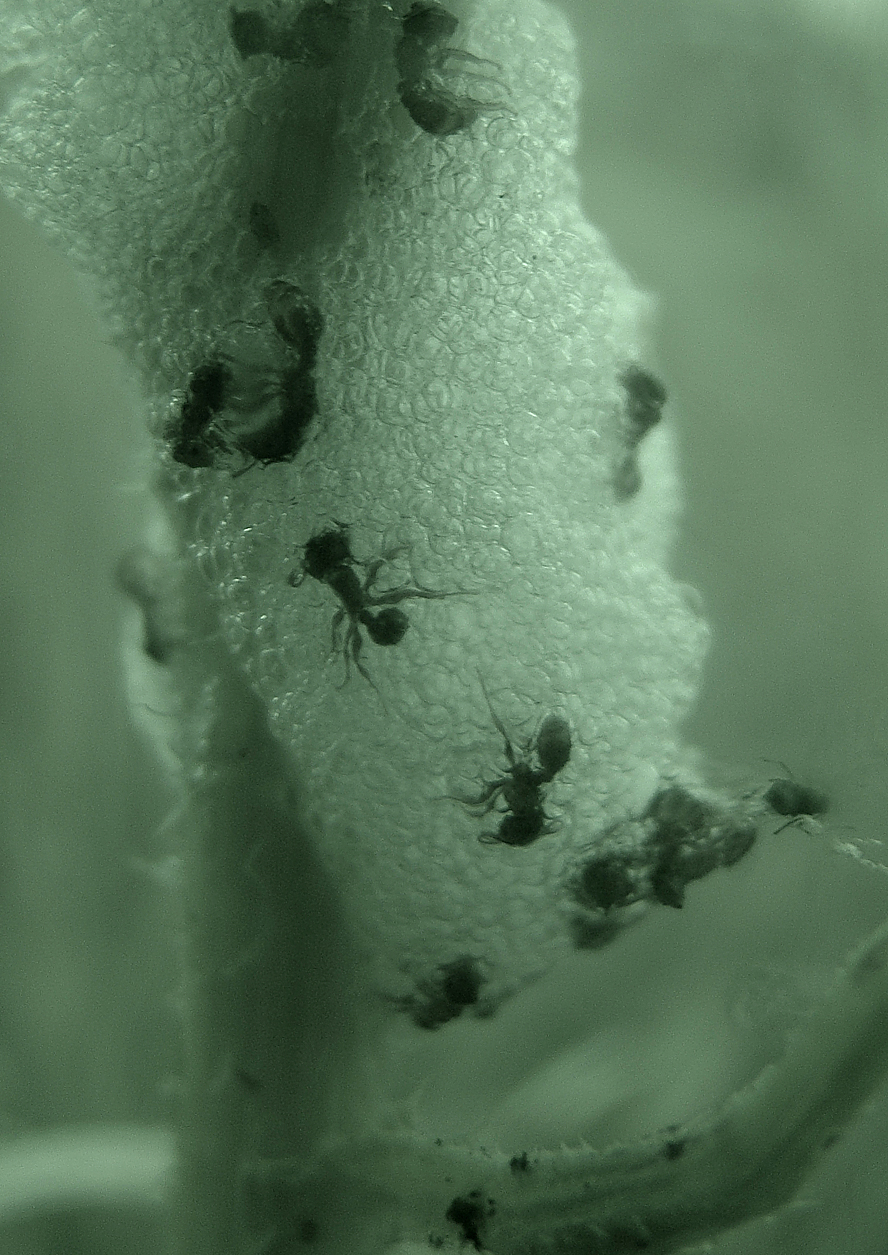
These minuscule ants are caught in the protecting foam made by the Froghopper Cercopis vulnerata, the Froghopper 's nymph is growing in the center of the shelter made of foam.

On this photograph, taken in the same occasion ... but turned into black & white ... you can see the Common pill-bug (Armadillidium vulgare) ... climbing near the ants and the foam.
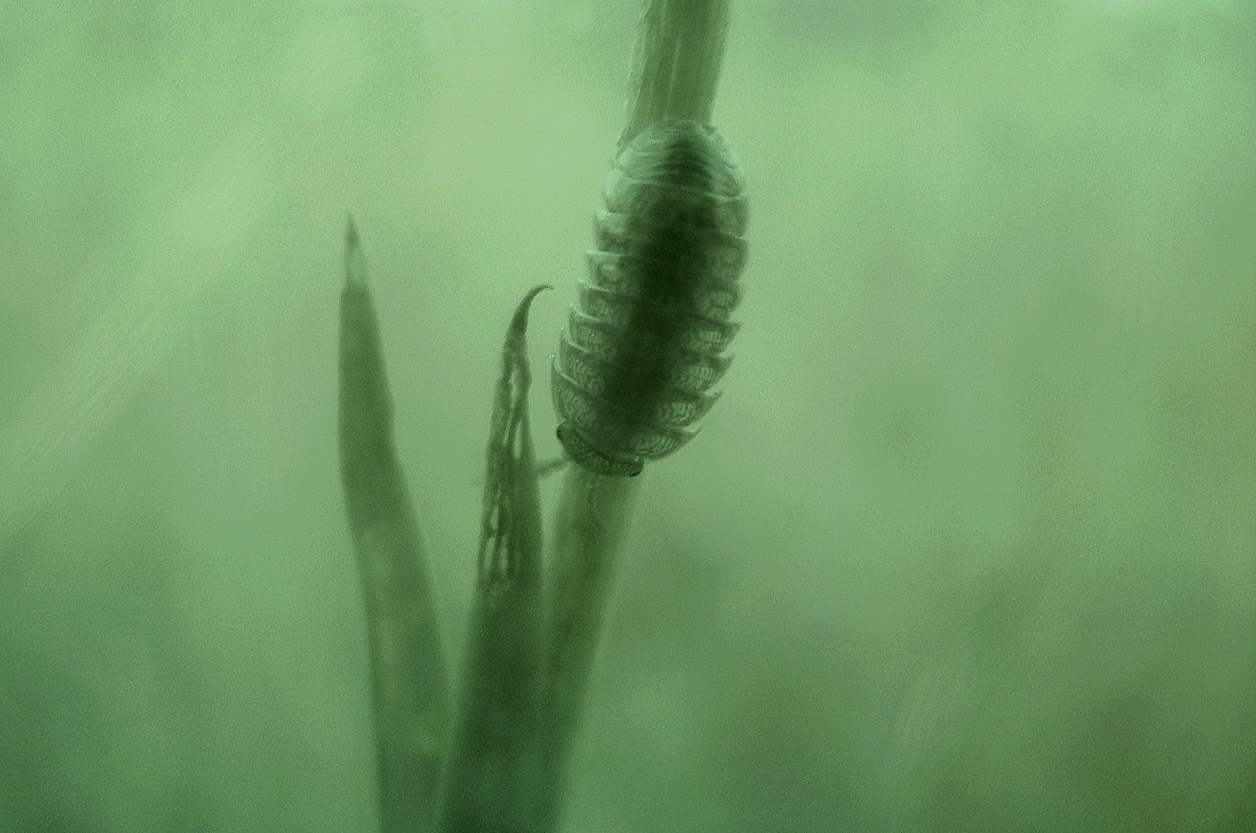
Many Pill - bugs of various sizes are active at the end of the long, hot summer day and during the short night with some humidity ... giving a bit of underwater atmosphere to the scene ... they are so similar to the sea arthropods that, in macro view and with a bit of imagination, the meadow can easily become the ocean floor.
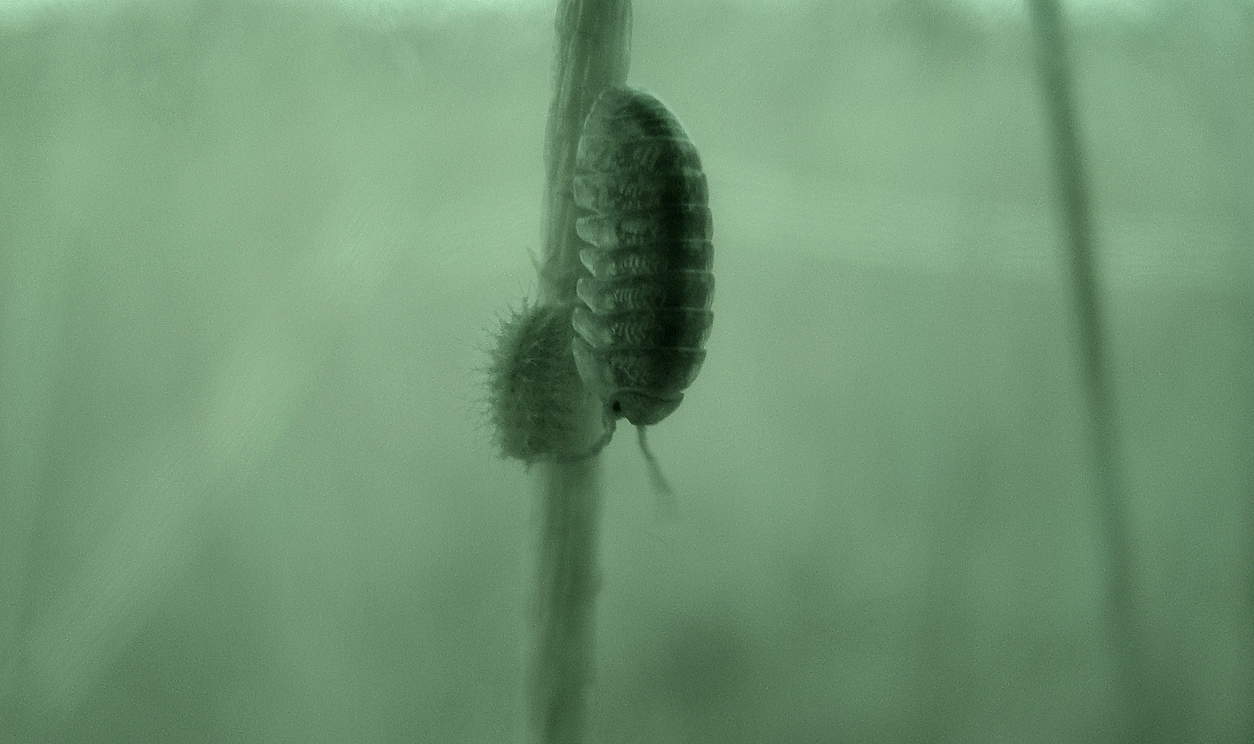
On this photograph you can see the Pill - bug passing by some very interesting, minuscule larvae.
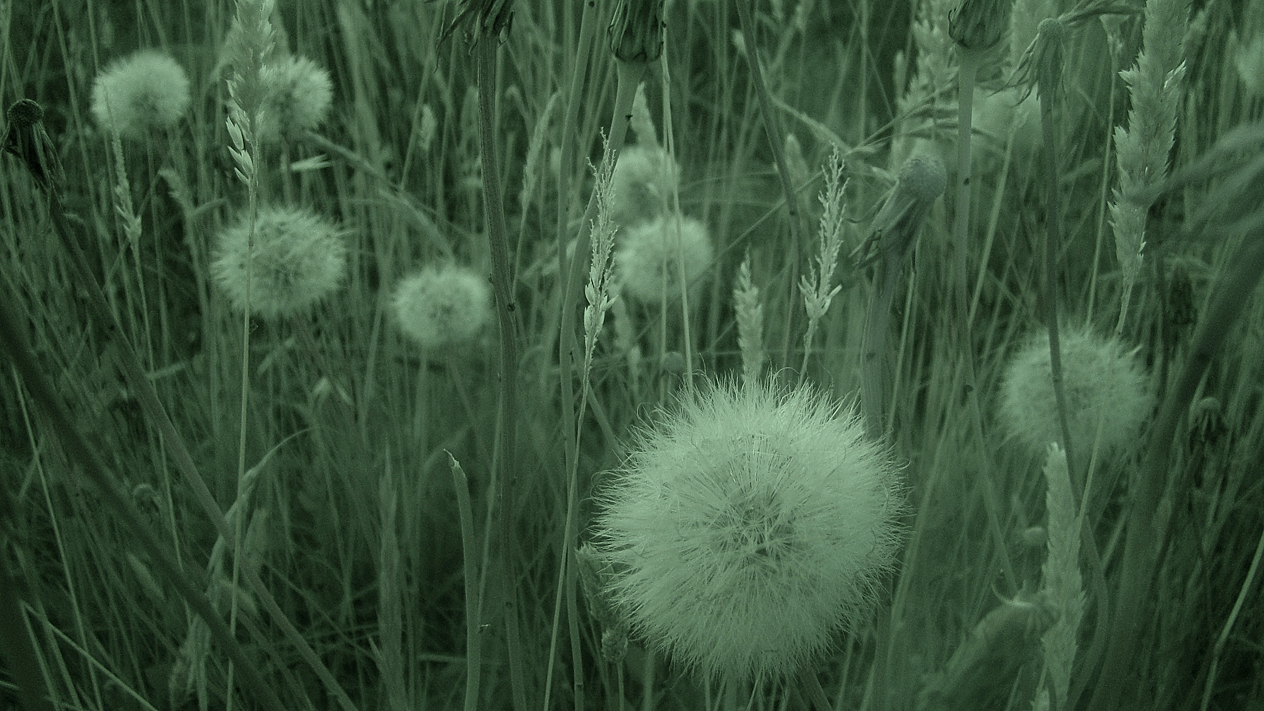
And now ...
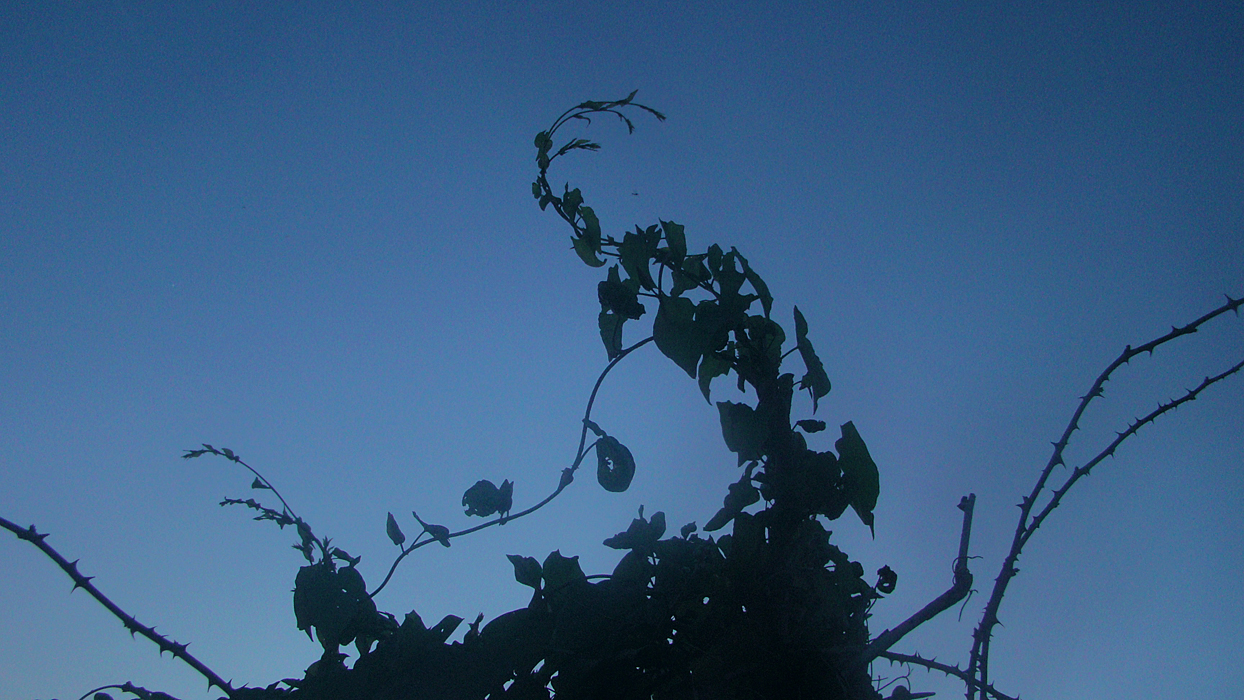
... before resuming ...
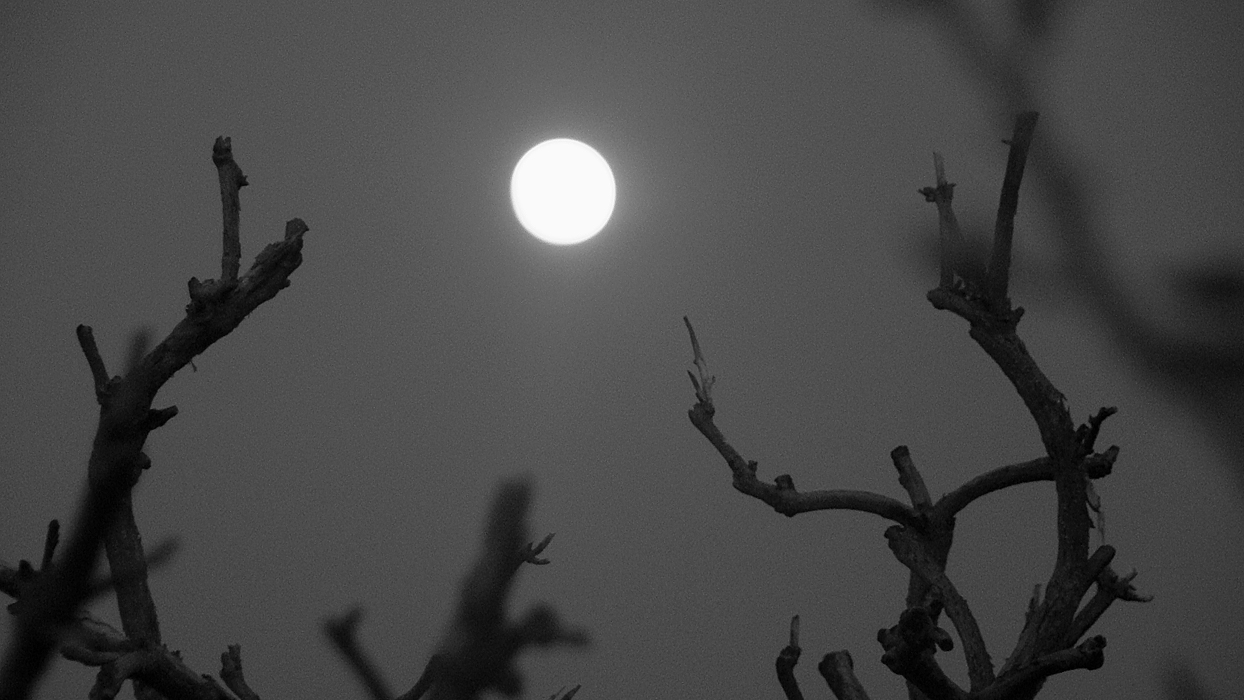
... the small arthropod activities ...
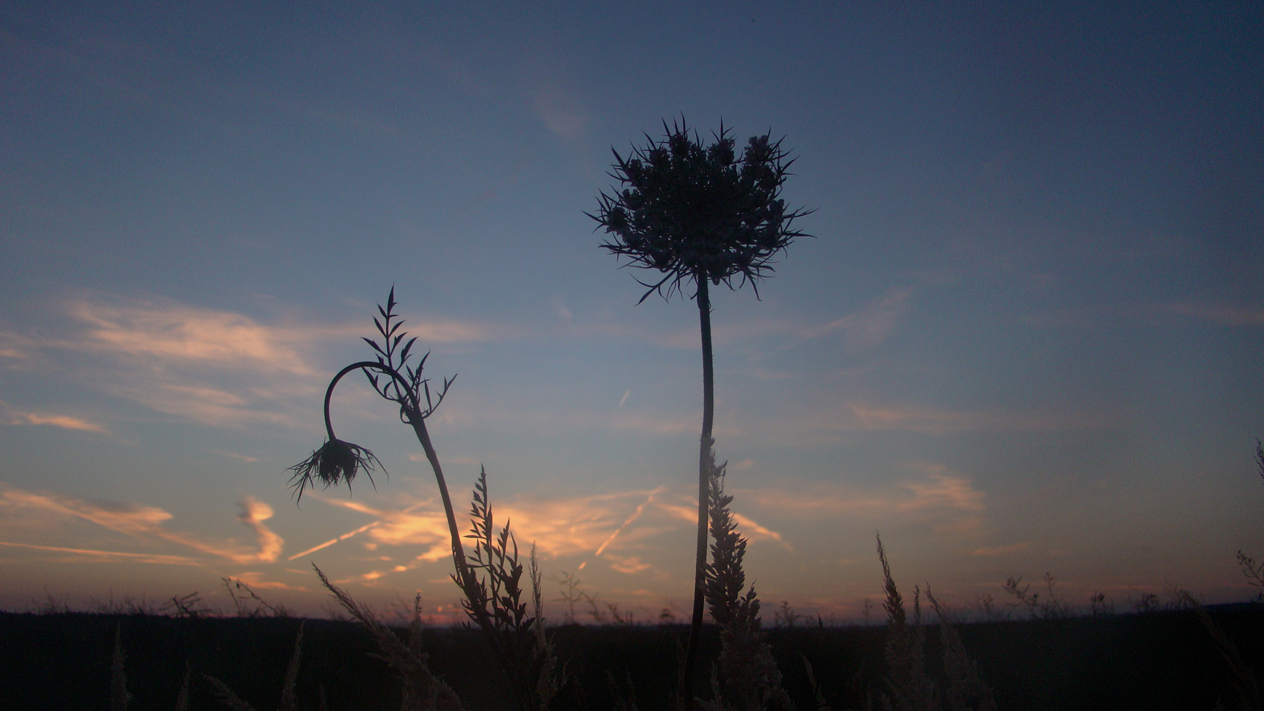
... is time ...
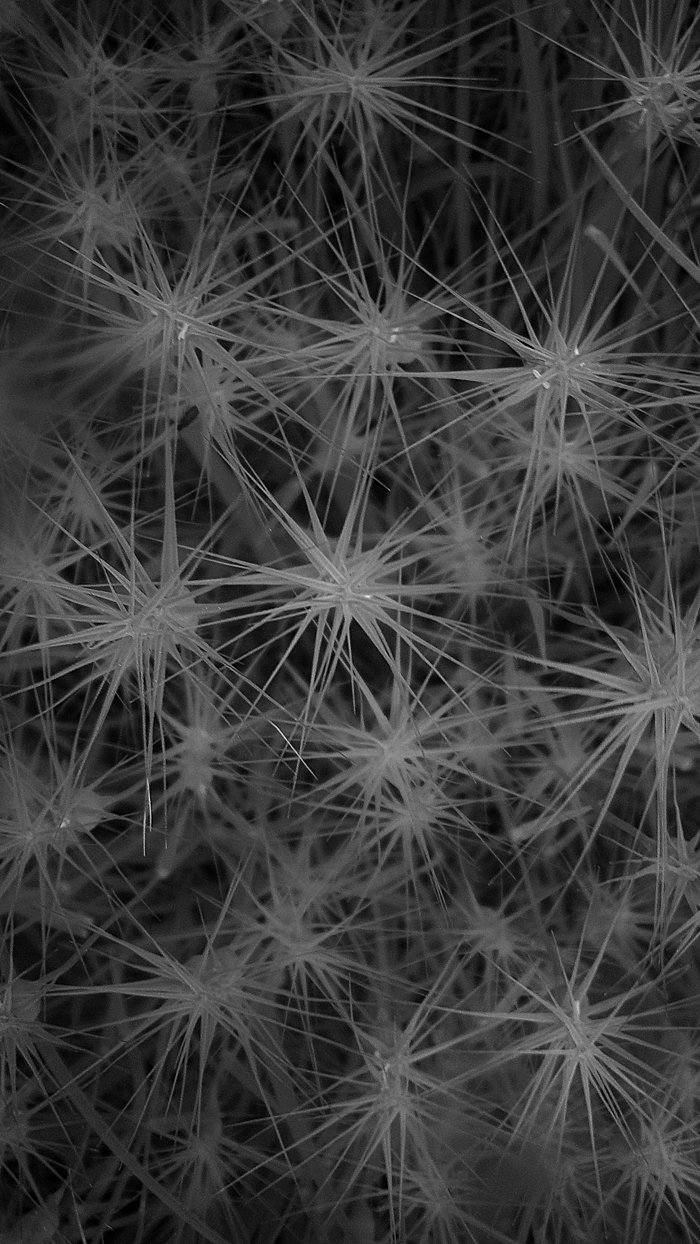
... for another ...
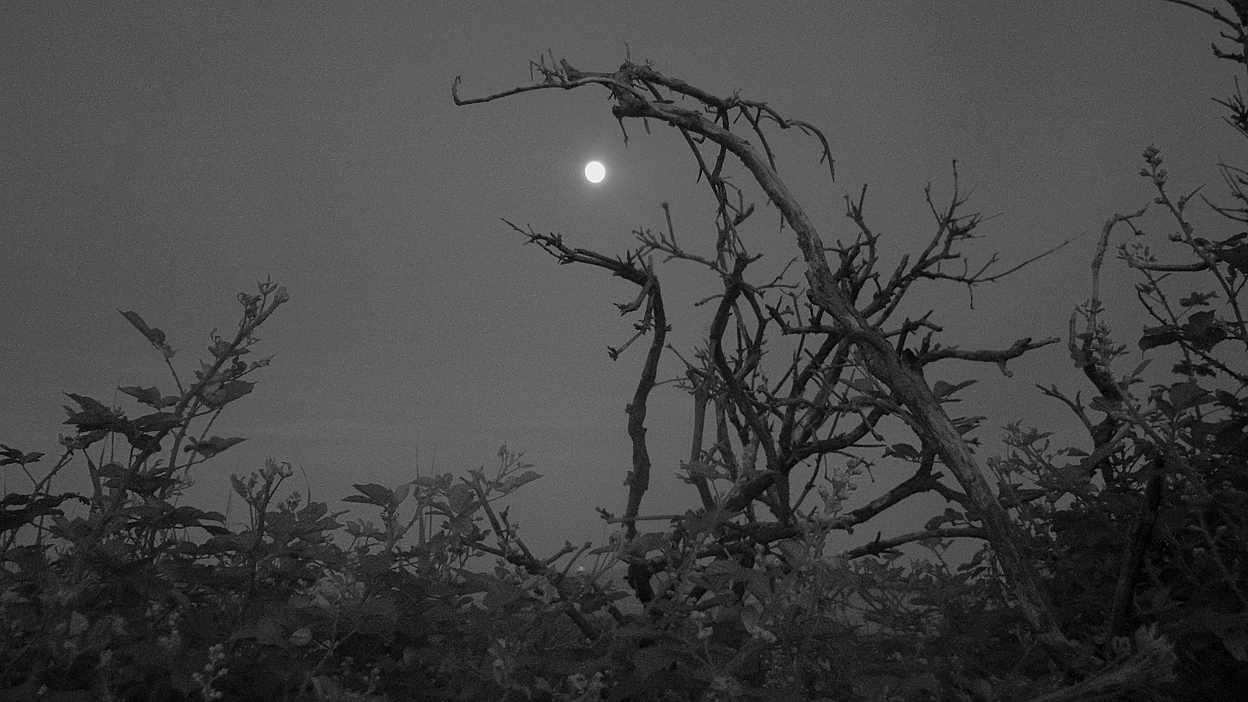
... a bit longer this time ...
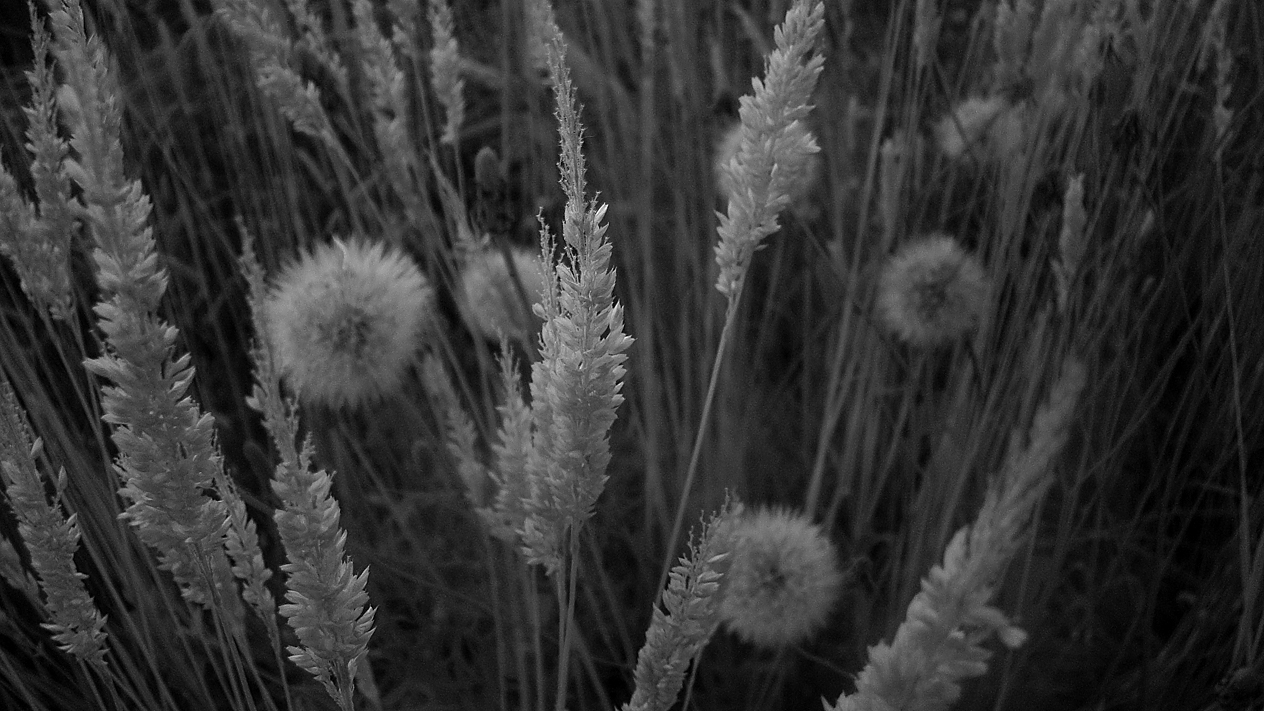
... atmospheric break ...
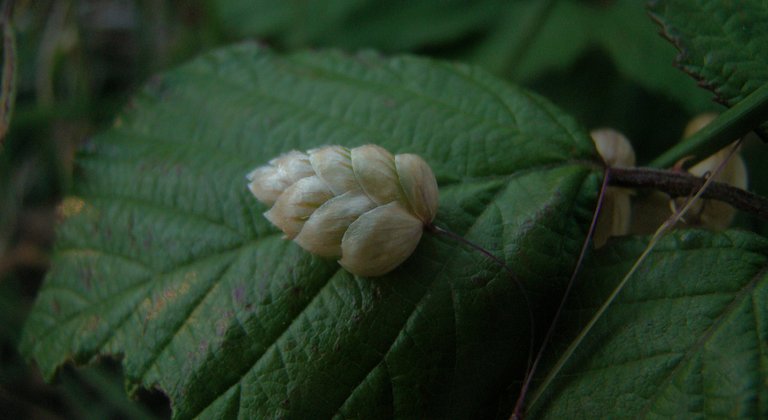 (Enlargeable)
(Enlargeable)... with some plant life ...
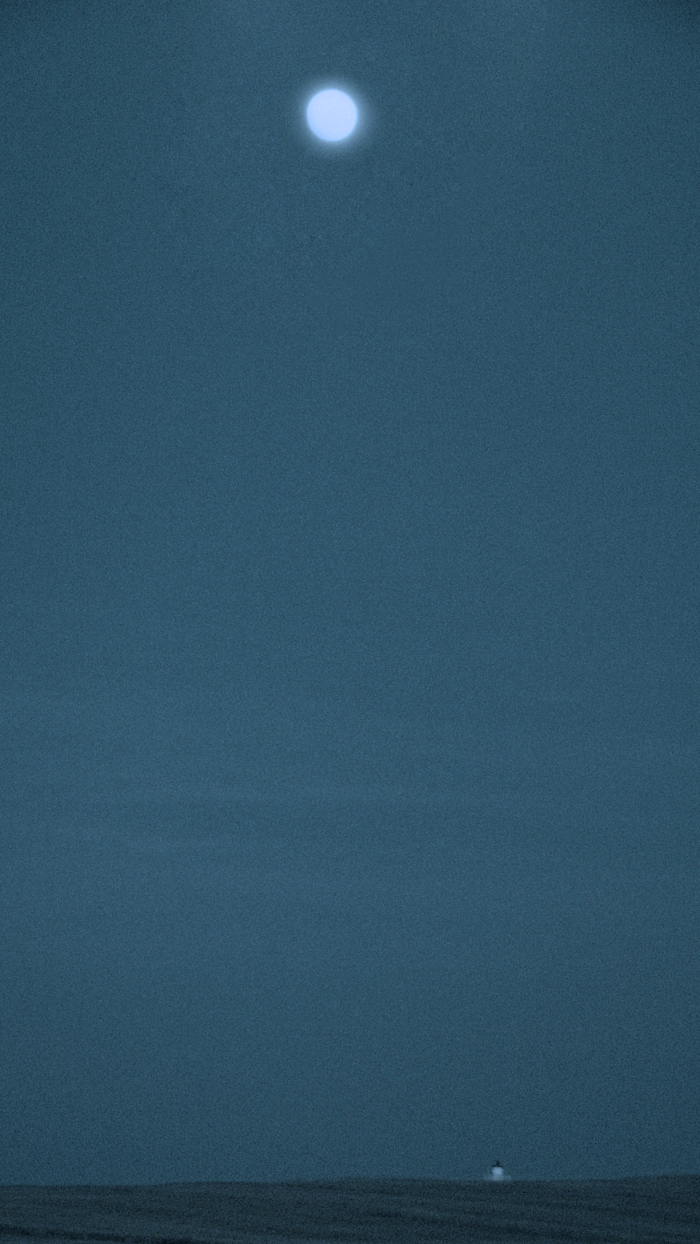
... this vertical landscape shot with the moon and the local lighthouse, that looks almost like an abstraction ...
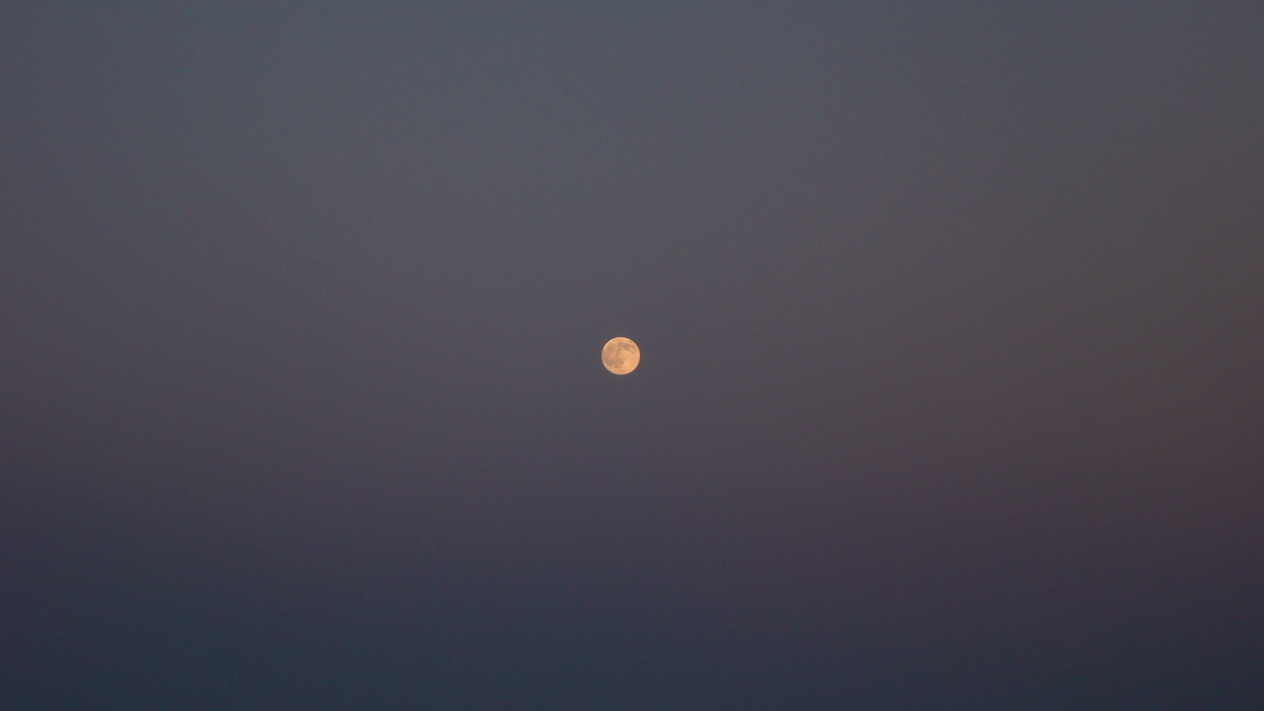
... and the three - step look at the orange moon ... step one ...

... step two ...

... step three.
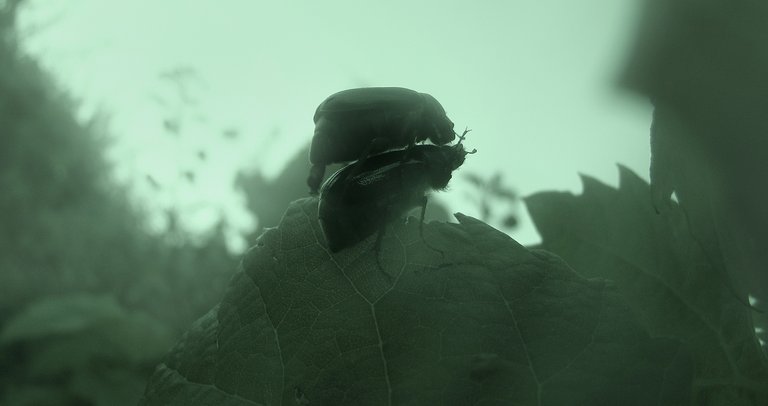 (Enlargeable)
(Enlargeable)These very common beetles in this area, very similar to Cockchafers but smaller and with some other small differences ... fly only at dusk and first hours of the night ...

... and they're also mating then.
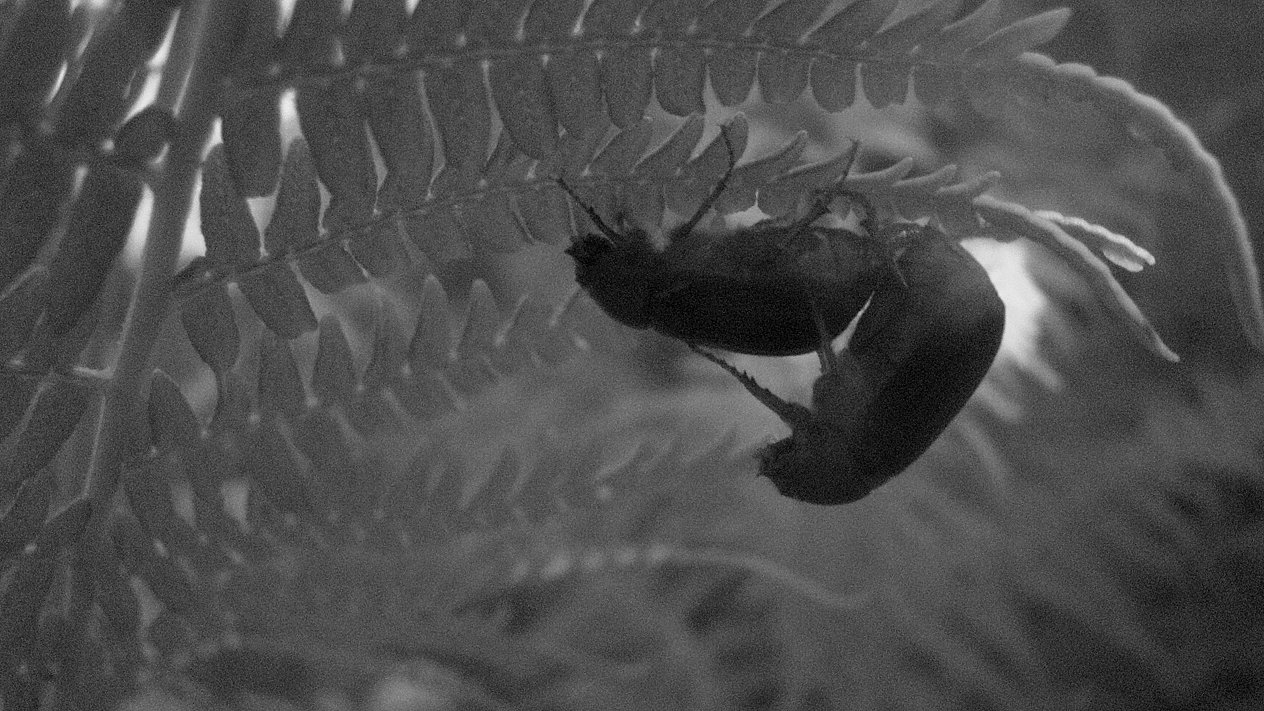
Here is another pair under the fern.
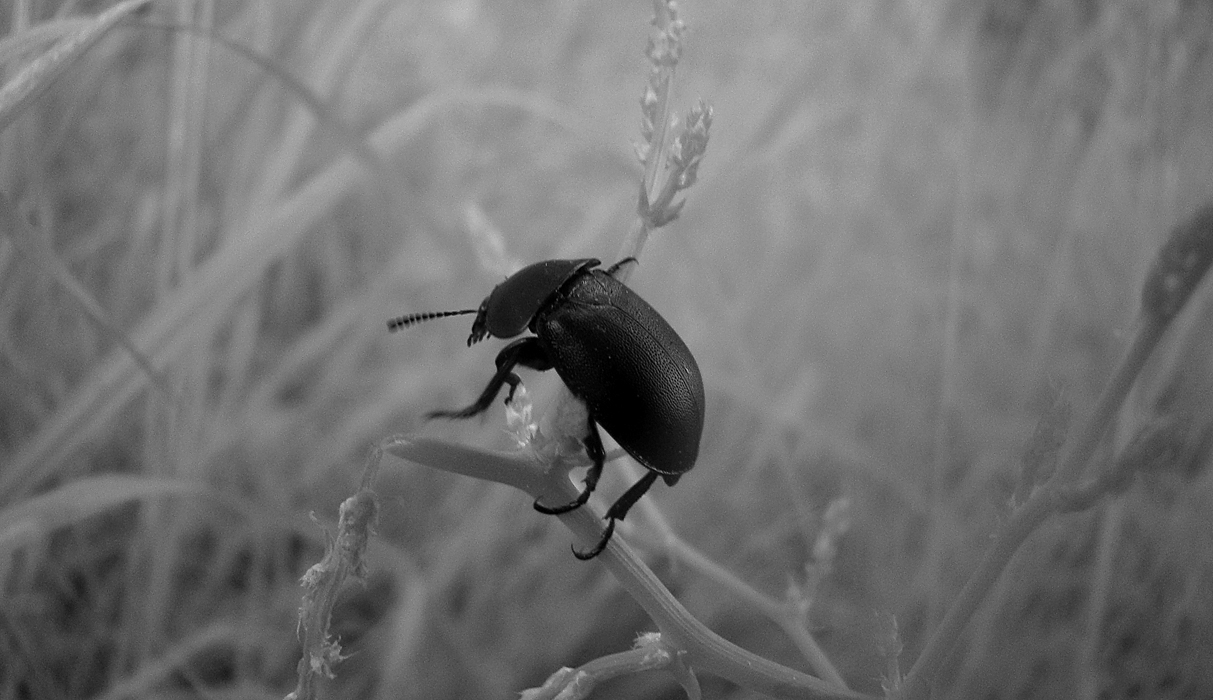
This is another beetle wandering through the night. I don't know the species nor the family.
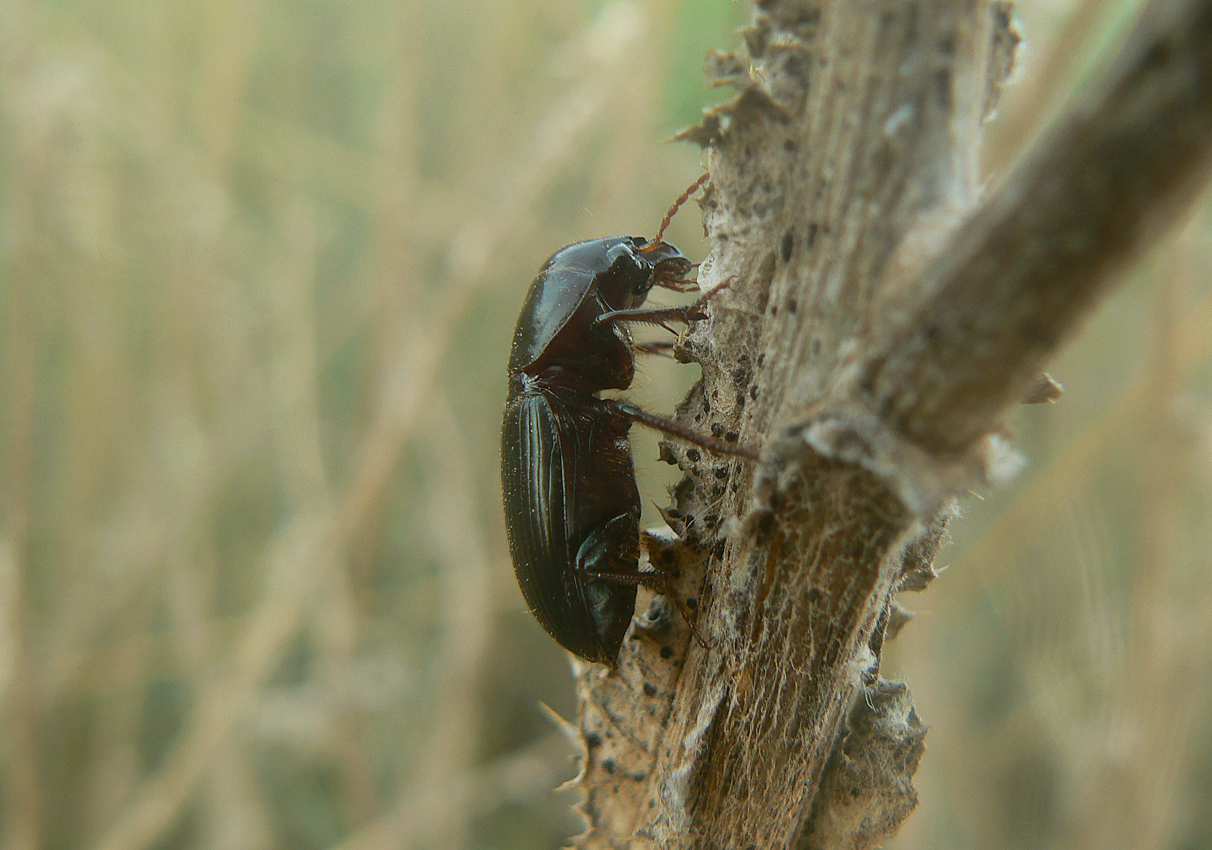
Many Ground beetles are active in the evening and at night ... this is one of those species, an omnivore that hunts warms and caterpillars but also collects and eats seeds with its strong mandibles.
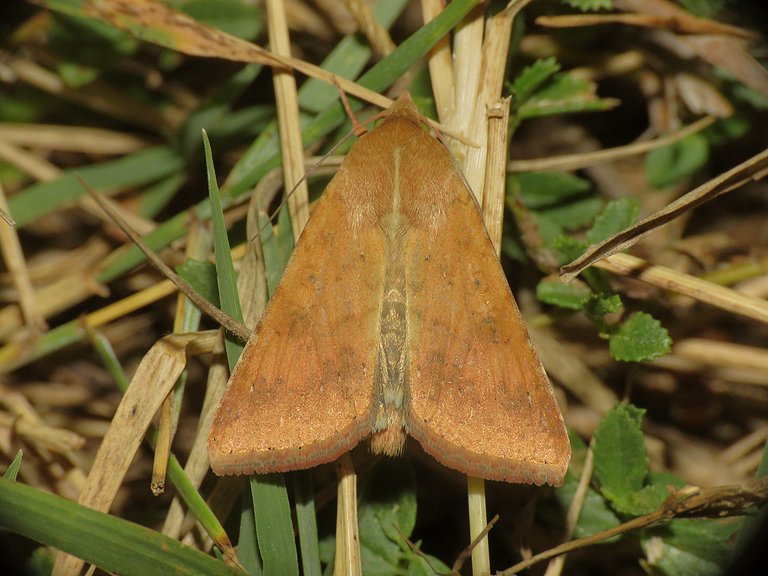
Here is one medium - sized moth species ready for the night activities ... and on the following photograph ...
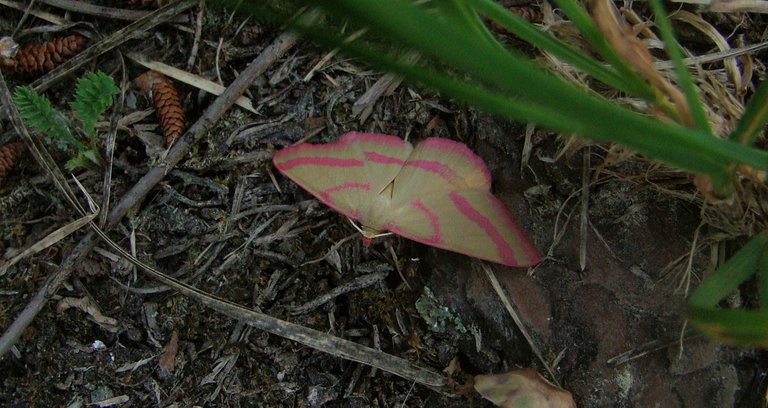
... a very colorful and elegant small species.
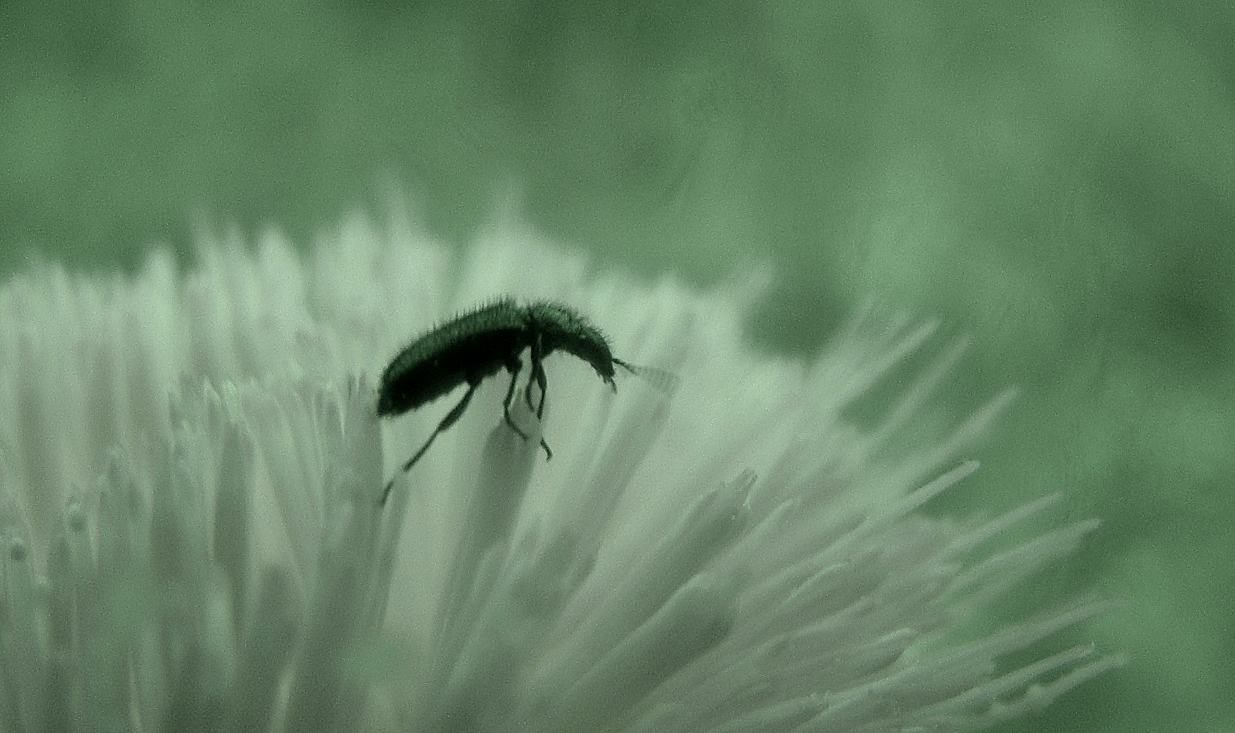
Here is a tiny diurnal flower beetle caught at night on the thistle flower.
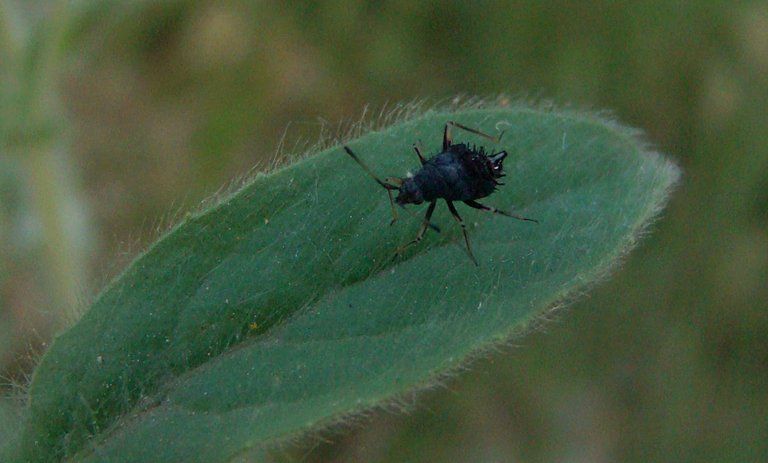
Here - a very small bug of unidentified species that I rarely see.
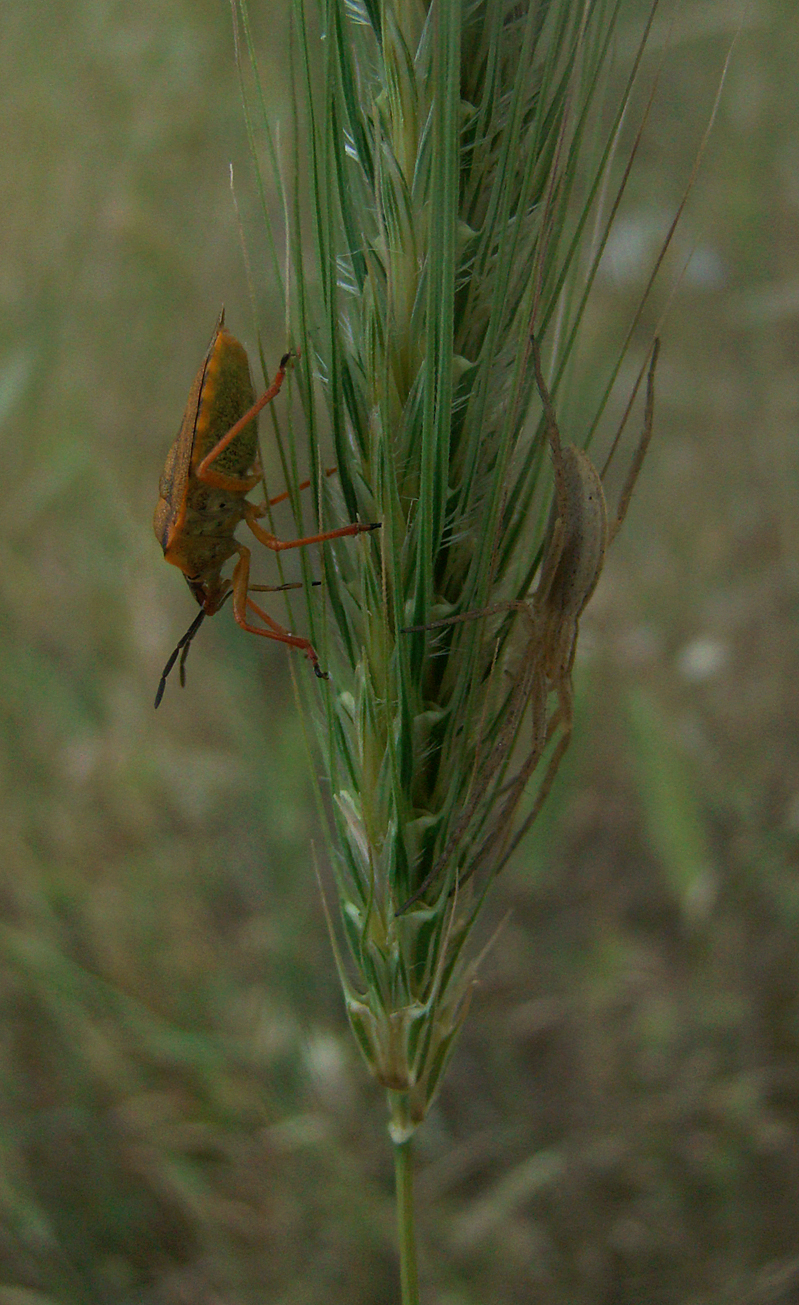
On this picture you can see a shield bug and spider in ambush, standing on the same ear of grass ... photographed after the sunset.
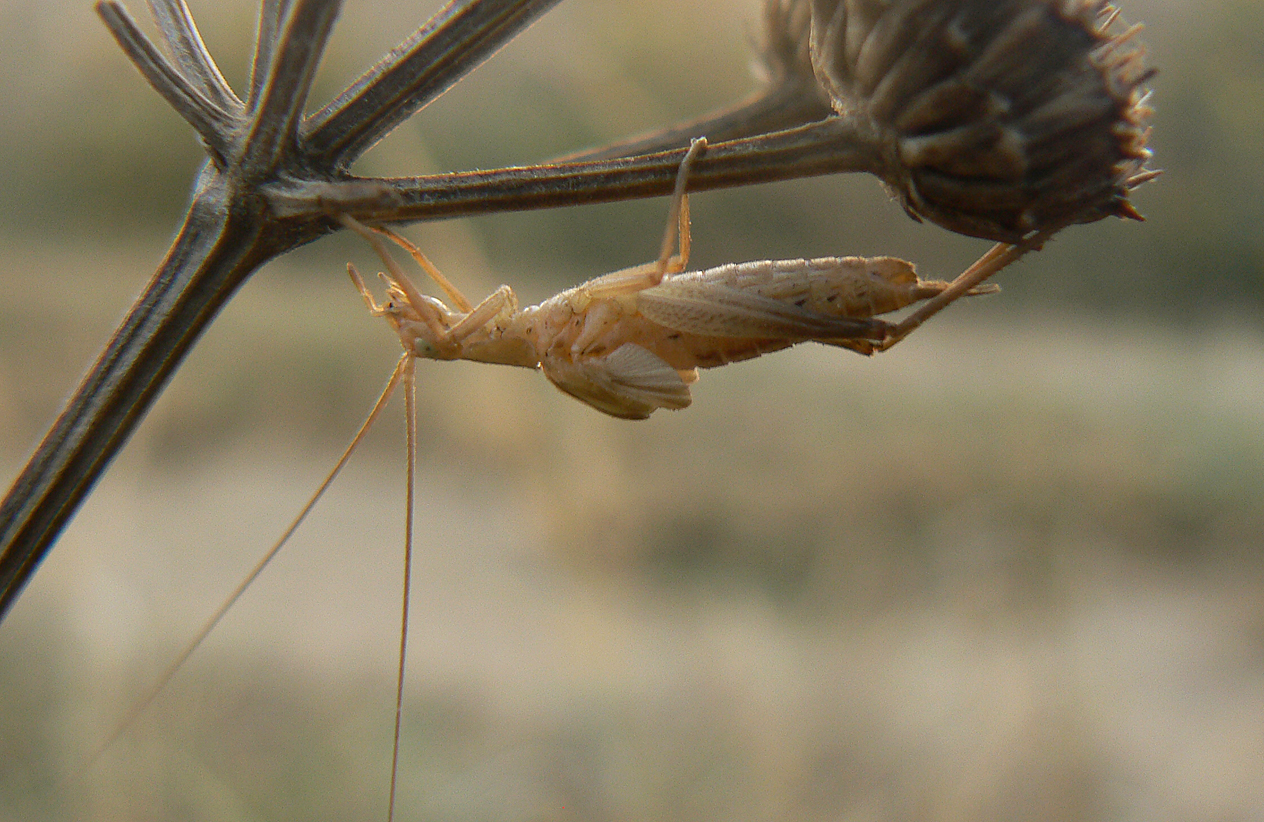
Here is the young Oecanthus pellucens, a tree cricket species. And now ...

... with this interesting furry fly ...
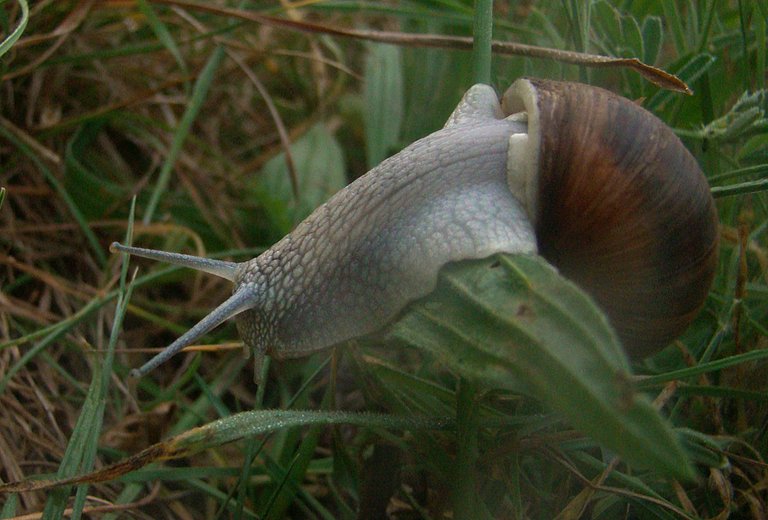
... and the closing shot of a snail ready for the slow nighttime feeding expedition ... is time to end this Twilight Zone overview of the coastal meadows in the Southern part of Istra peninsula, in the northern Adriatic of Croatia ... as always in these posts on HIVE, all the photographs and video materials are my work ... THE END.
WoW . Just amazing
Thanks. :) Glad you like this twilight walk.
The bees are so appropriate. : )
The Mammoth wasp is huge and frightening but I am glad to hear that it was a "gentle giant" for the photographer. Incredible post and enjoyable videos as always @borjan. : )
P.S. This is happily my first upvote and reply on Hive. : )
:)
Incredible photos of tiny insects in the night light. These are impossible photos for me to imagine of taking!
You must have infrared eyes!! How could anyone see tiny insects in dim light!
I think you must have very special sensor inside your head too!
:) I was obsessed with insects and other small animals since I was a child ... and I had a lot of opportunity to search for them and watch them because this is a small town, and before was even smaller agriculture and fishing oriented village surrounded by nature, so after all these insect - watching years, sometimes is more easy for me to notice something tiny like that than a normal sized thing, even in the almost dark.
We found a lot of fireflies, but only females ... I did not even suspect that the males are different!
I always thought that flying fireflies are a different species, and they are not found in our area, but only on the sea coast)
I also really liked the spiders and the photos in green are very good !!!
The moon is gorgeous!
Thank you for such a deep post, I see that you worked on it for about half a day)
Here also, I see the males rarely ... I remember as a kid reading in some book about how males fly and females are more worm - like, and I thought, when I'm going to see those damn males, where are they ... females regularly appeared around my house.
Yes, females are not uncommon in our area too ...
If you appreciate the work we are doing, then consider supporting our witness @stem.witness. Additional witness support to the curie witness would be appreciated as well.
For additional information please join us on the SteemSTEM discord and to get to know the rest of the community!
Please consider using the stem.openhive.network app and including @steemstem as a beneficiary of this post. This could yield a stronger support.
Thank you